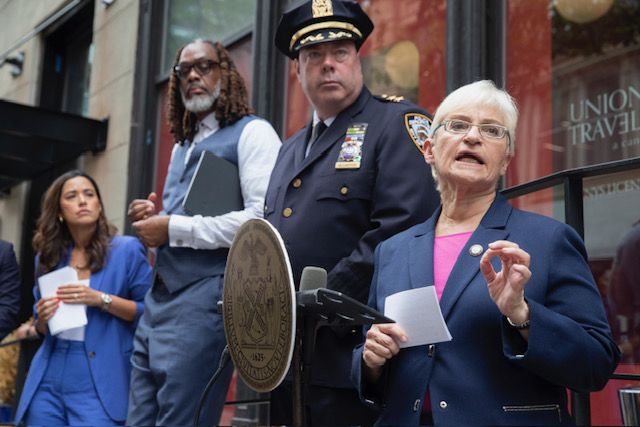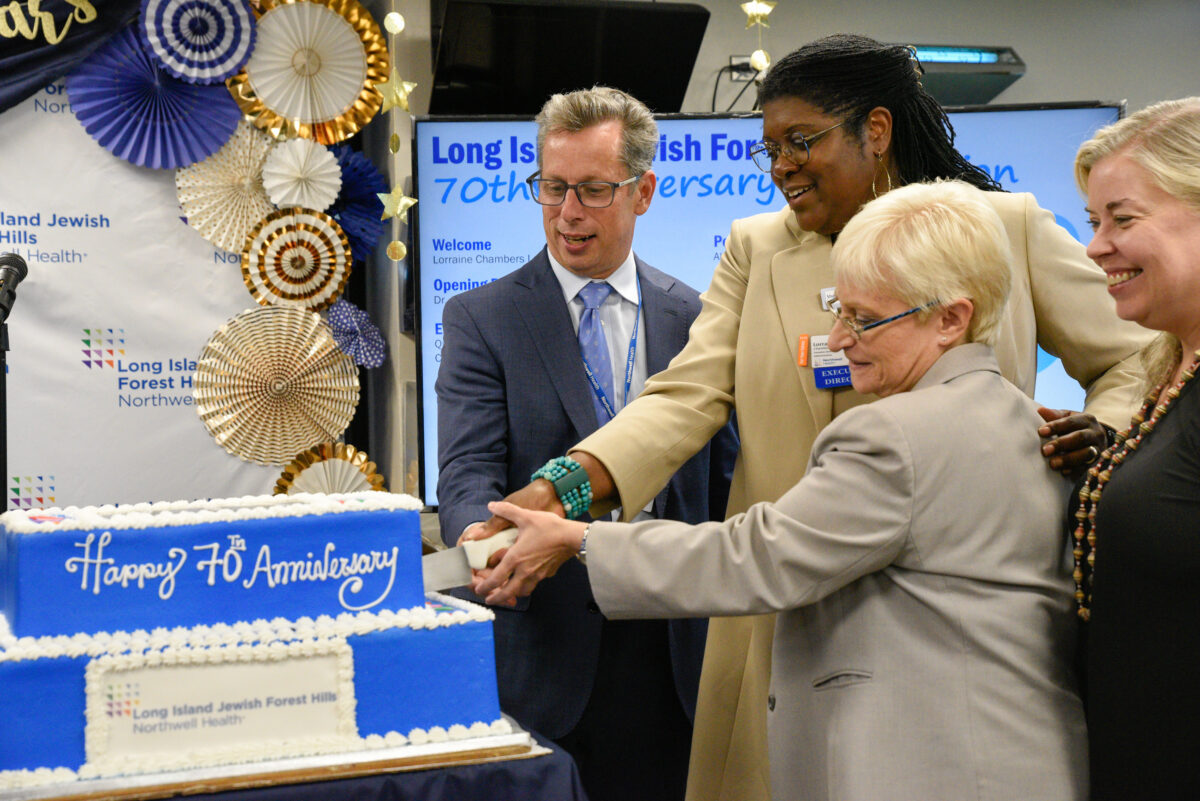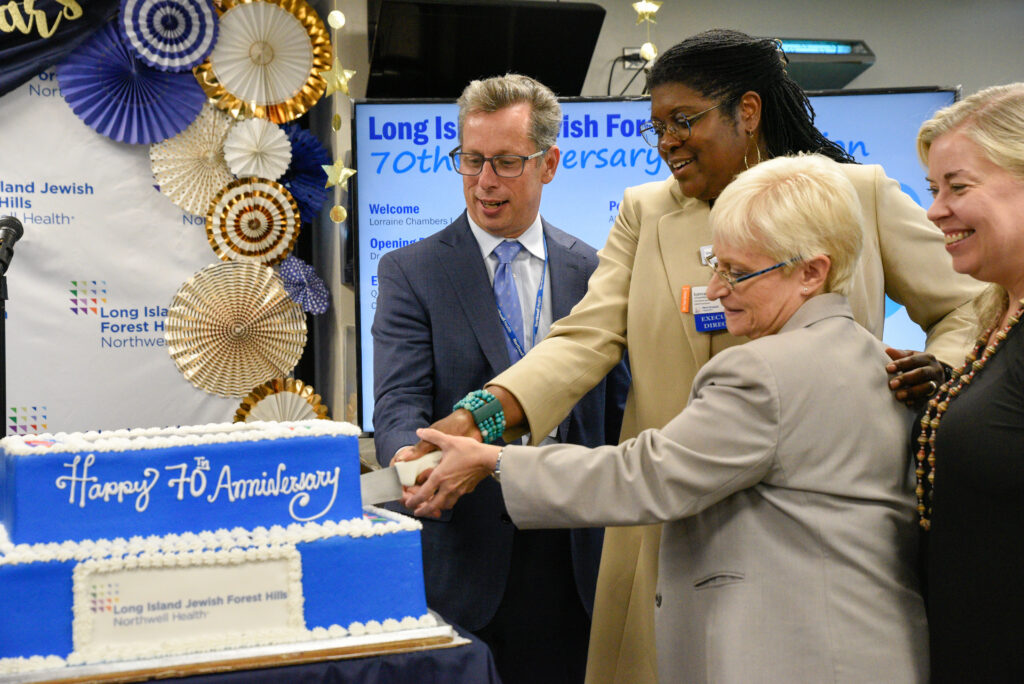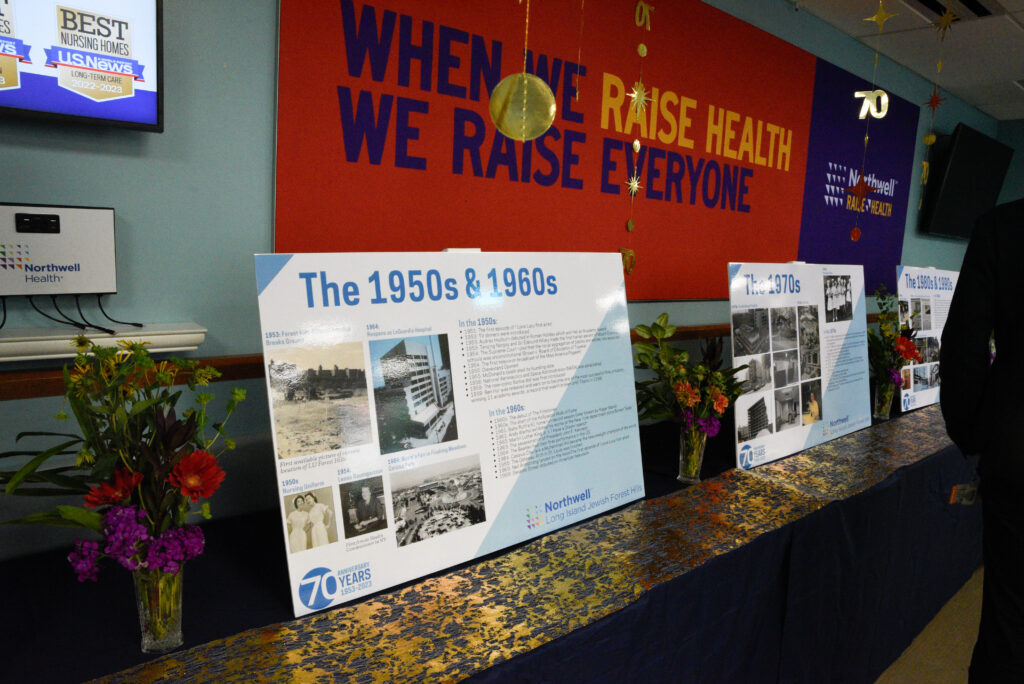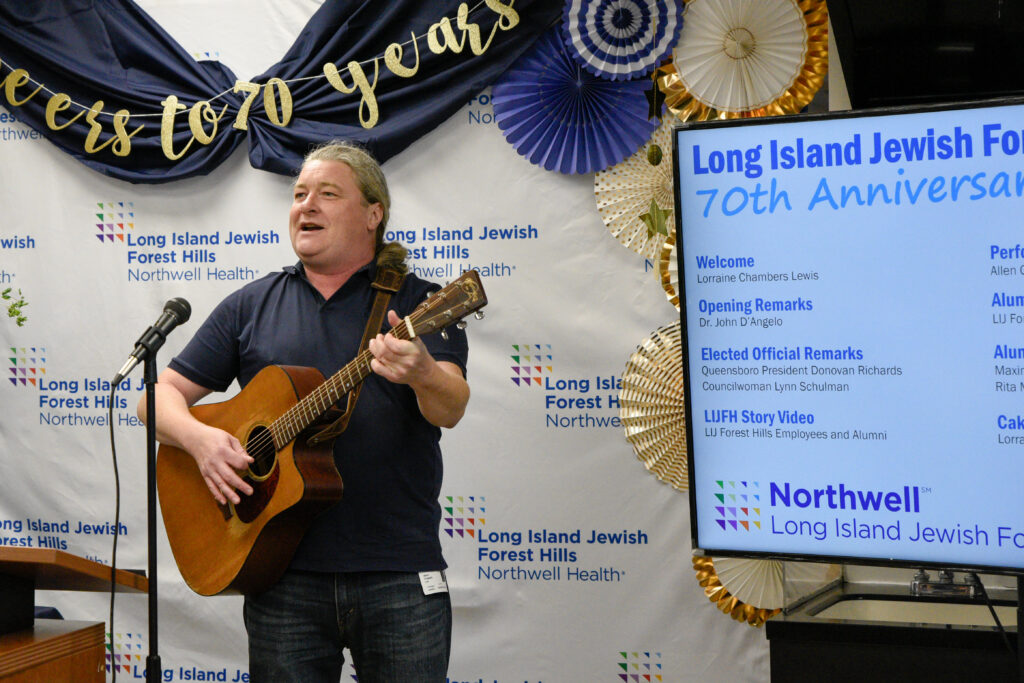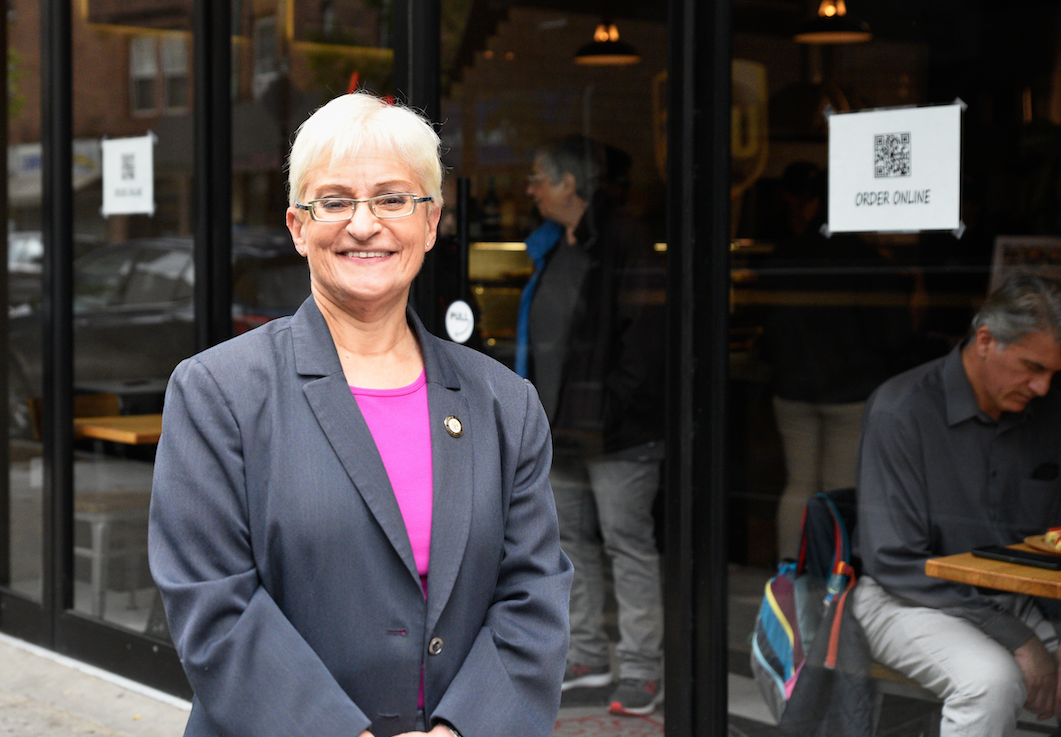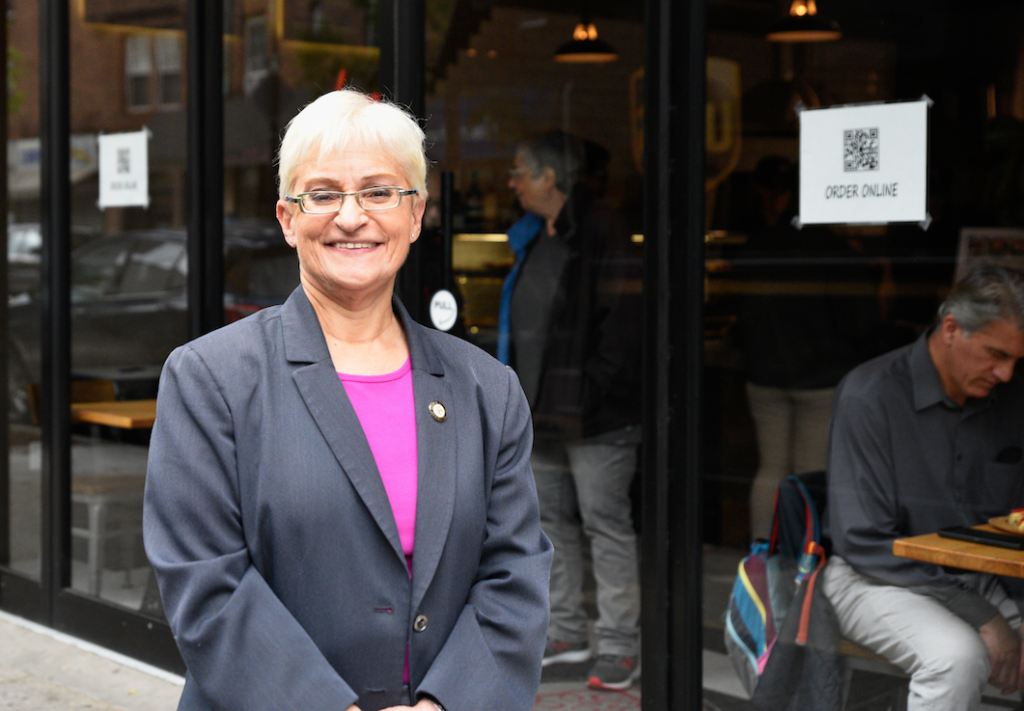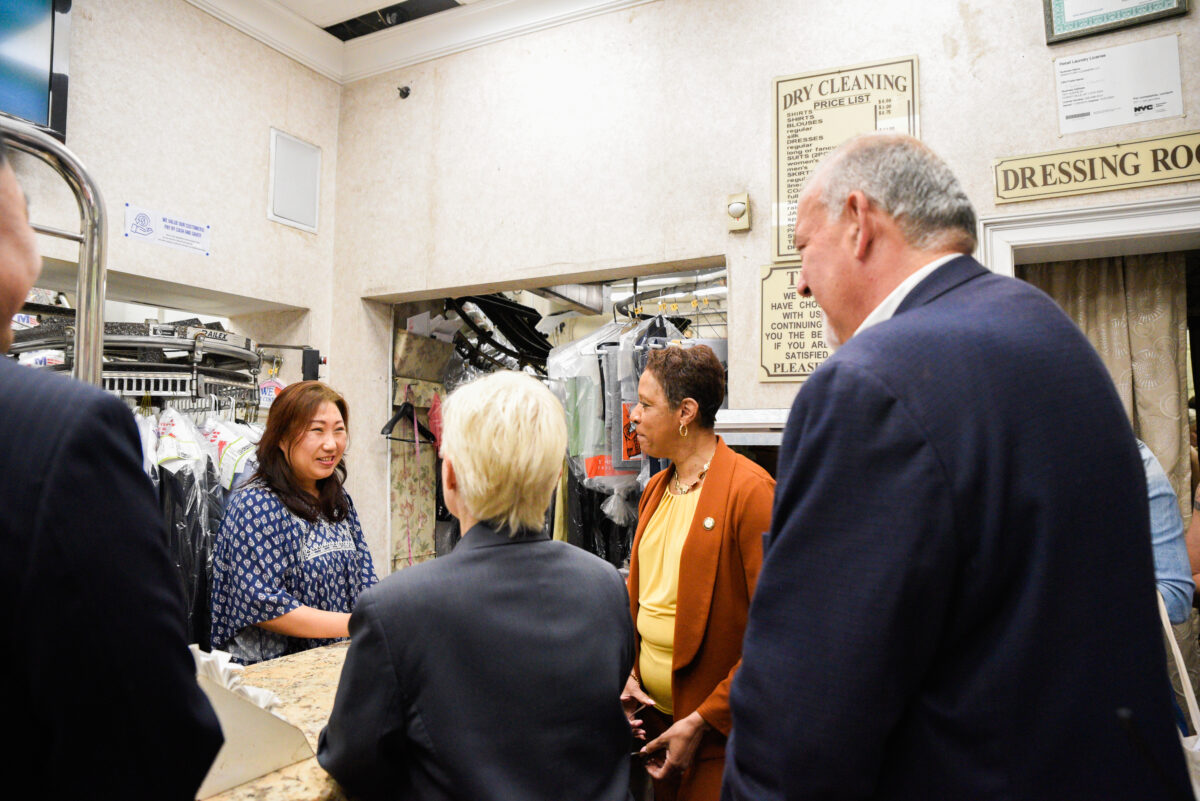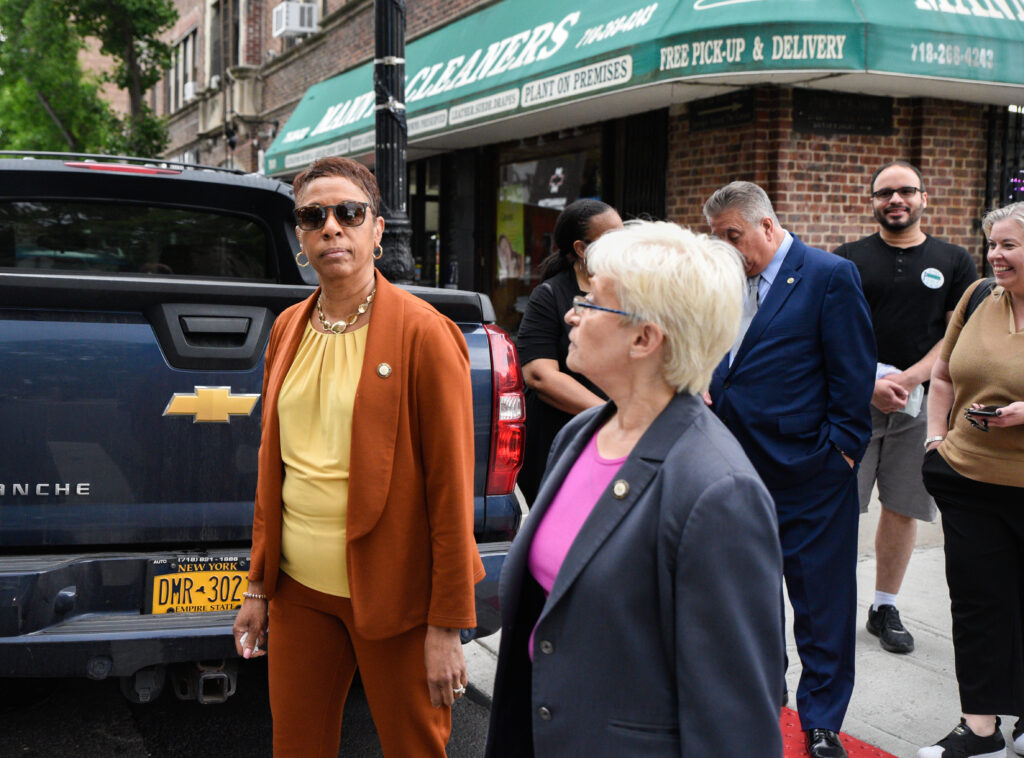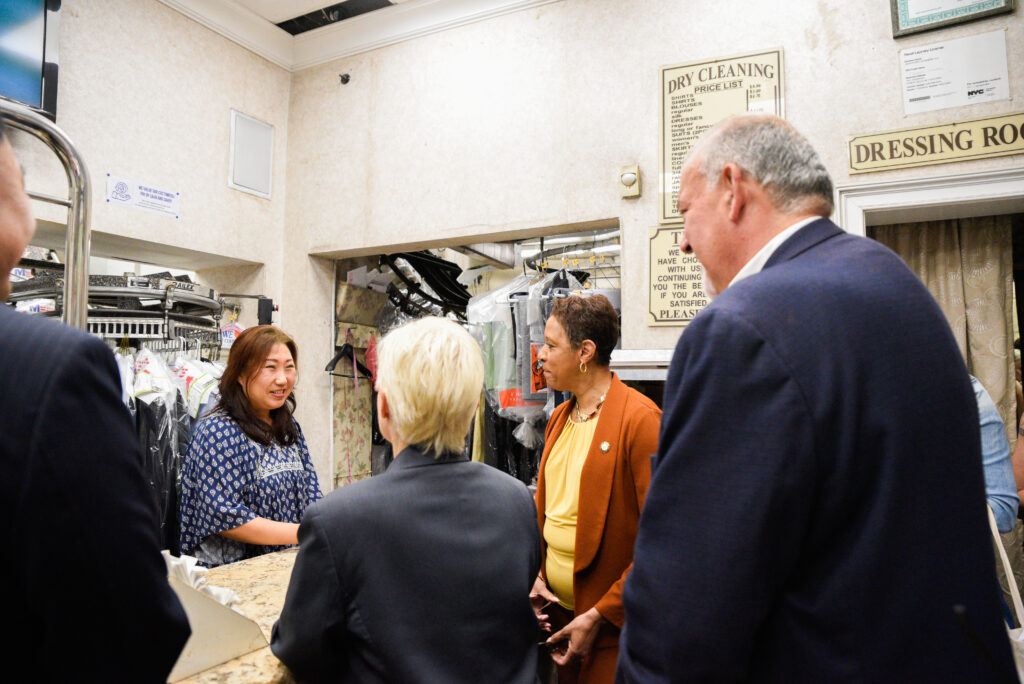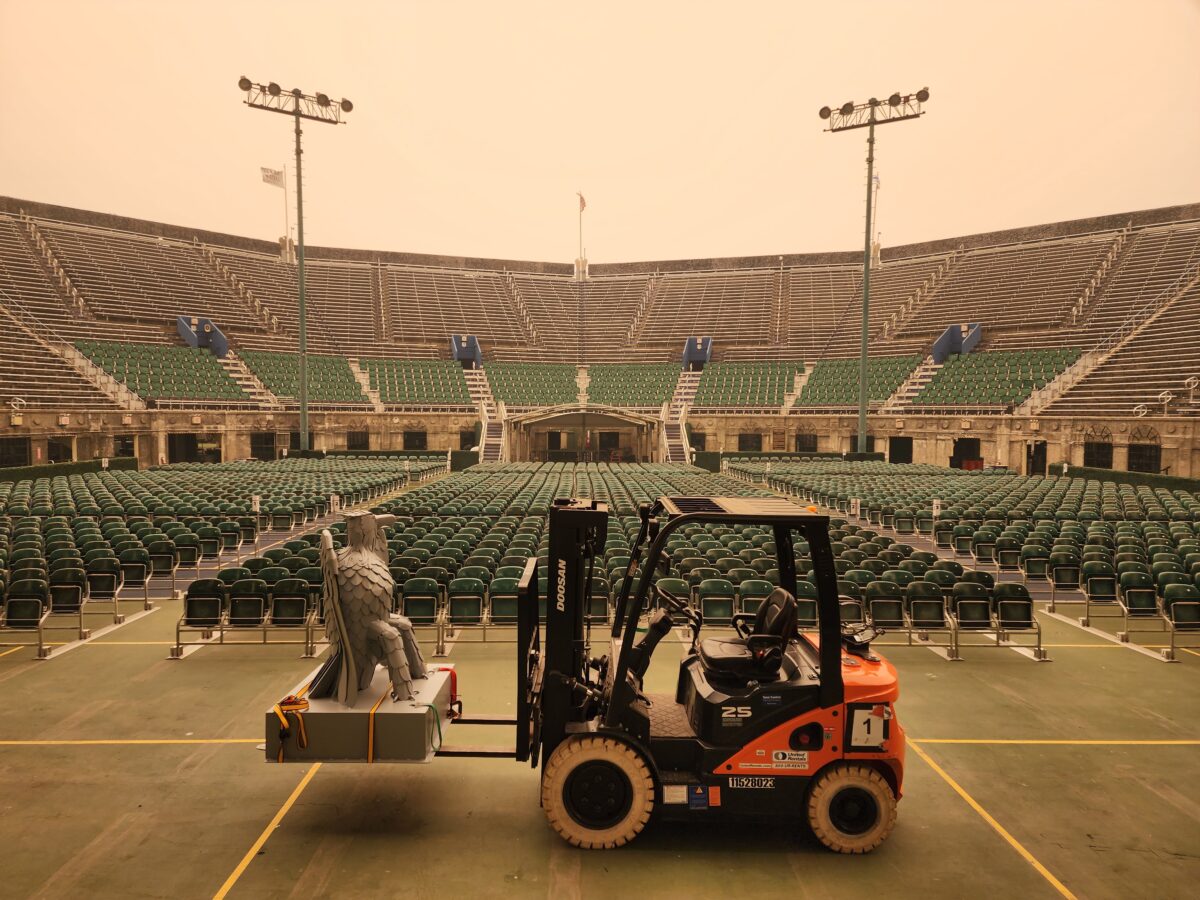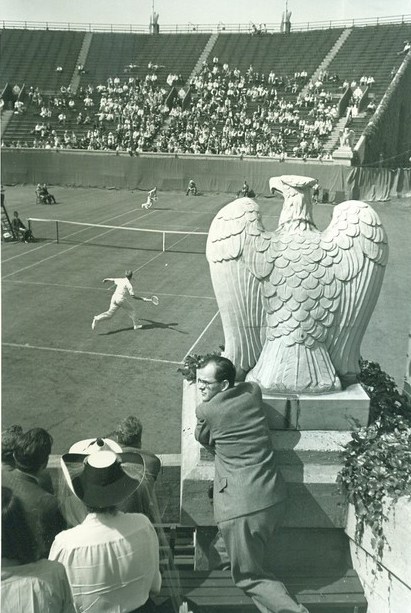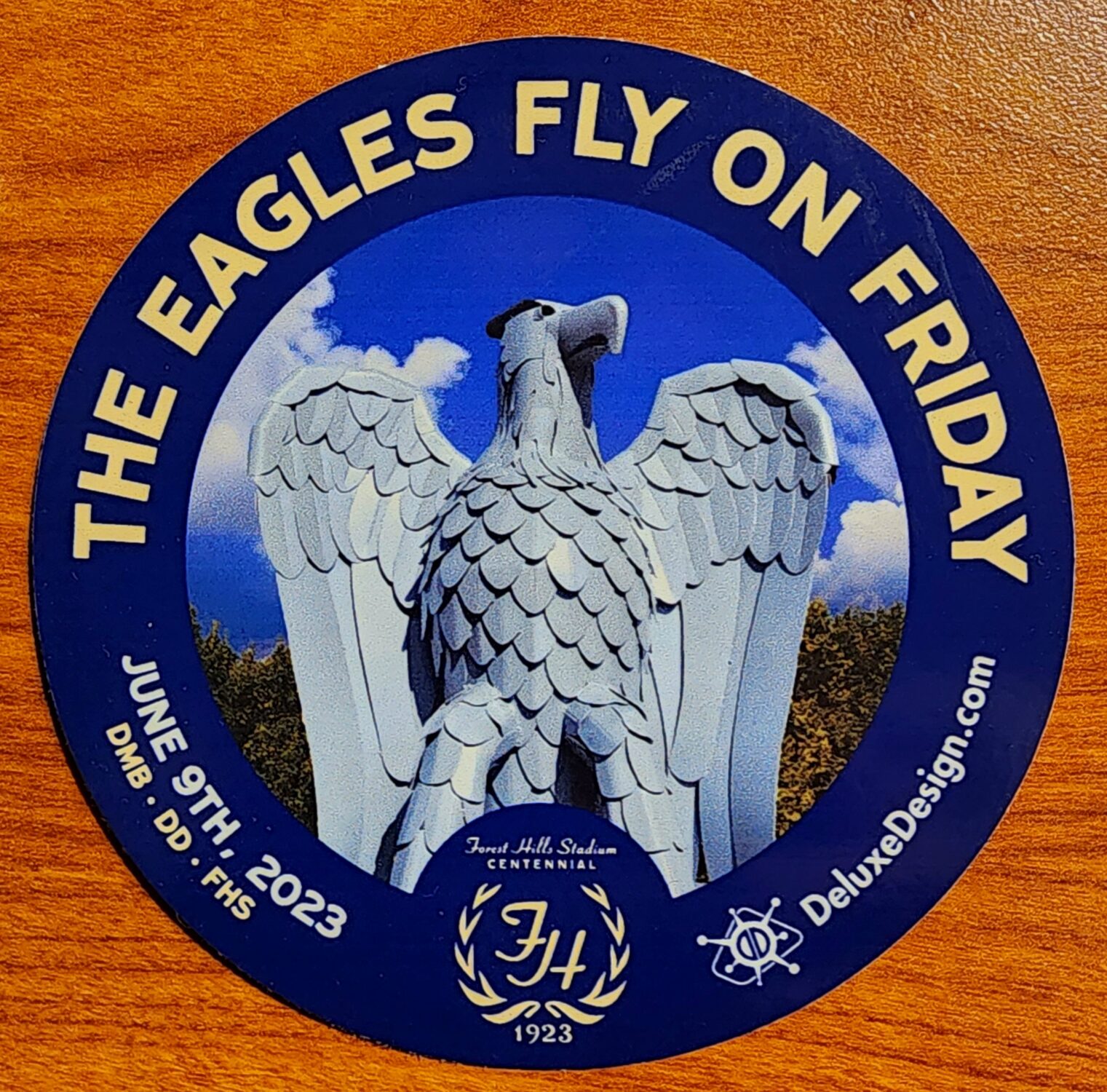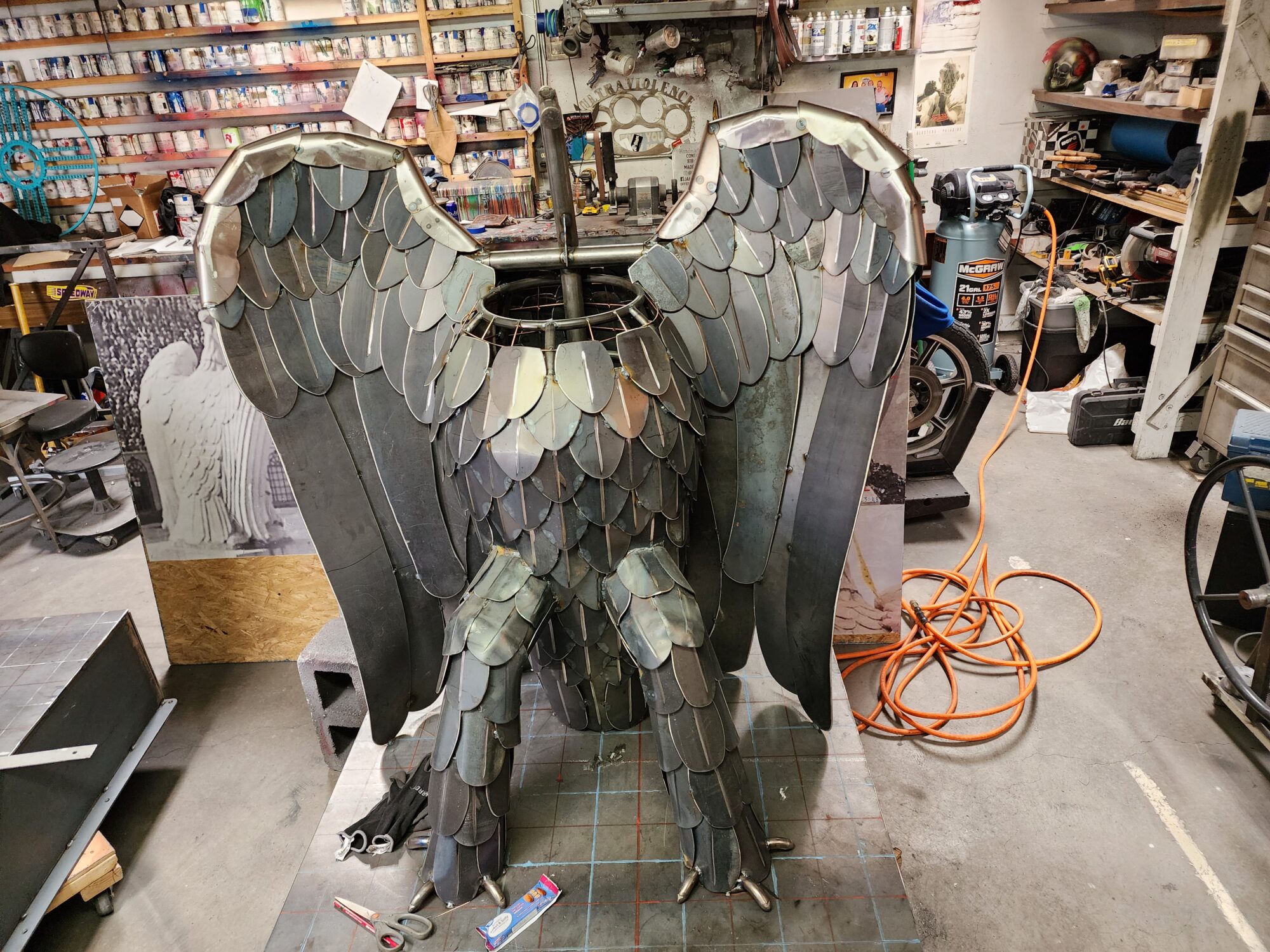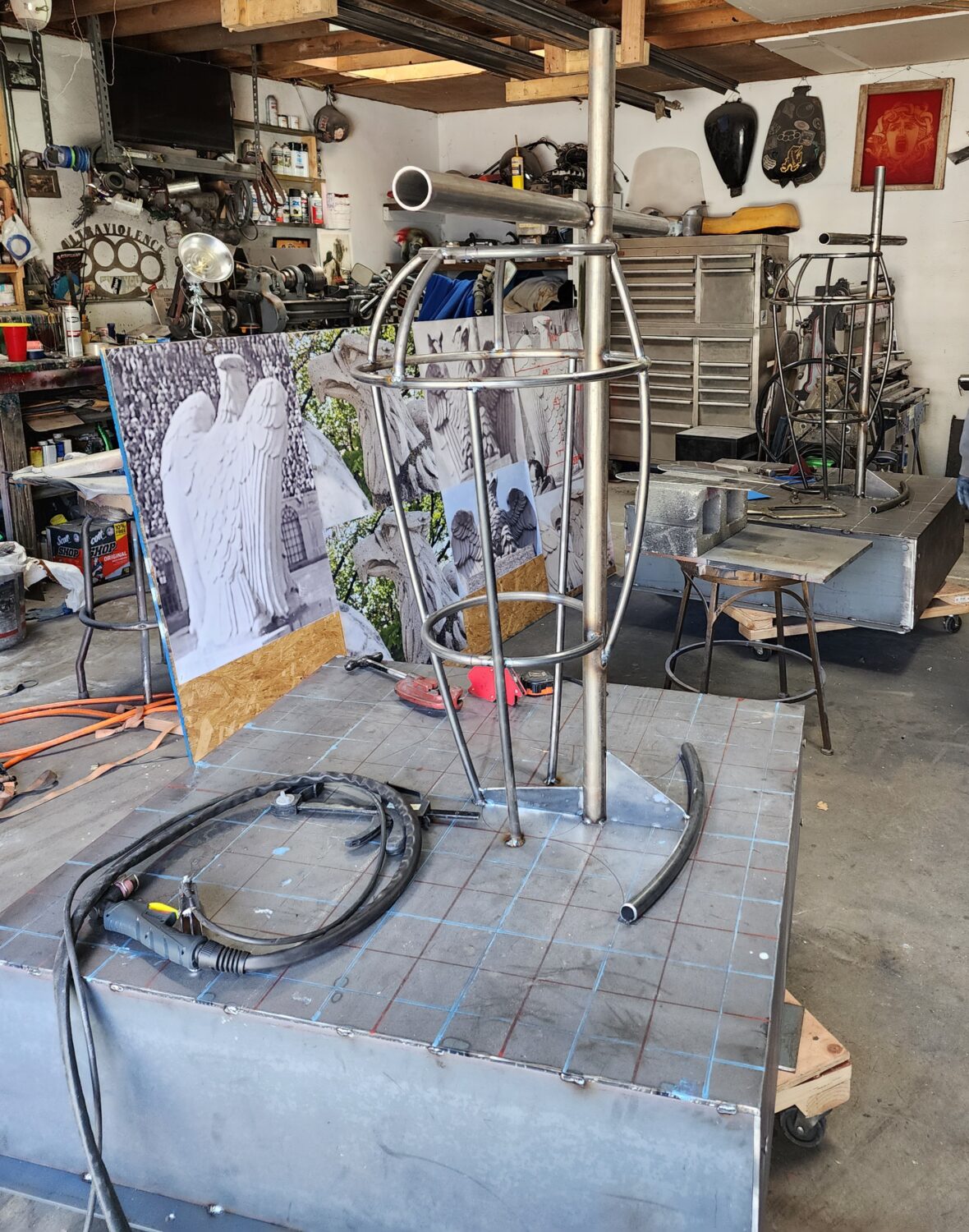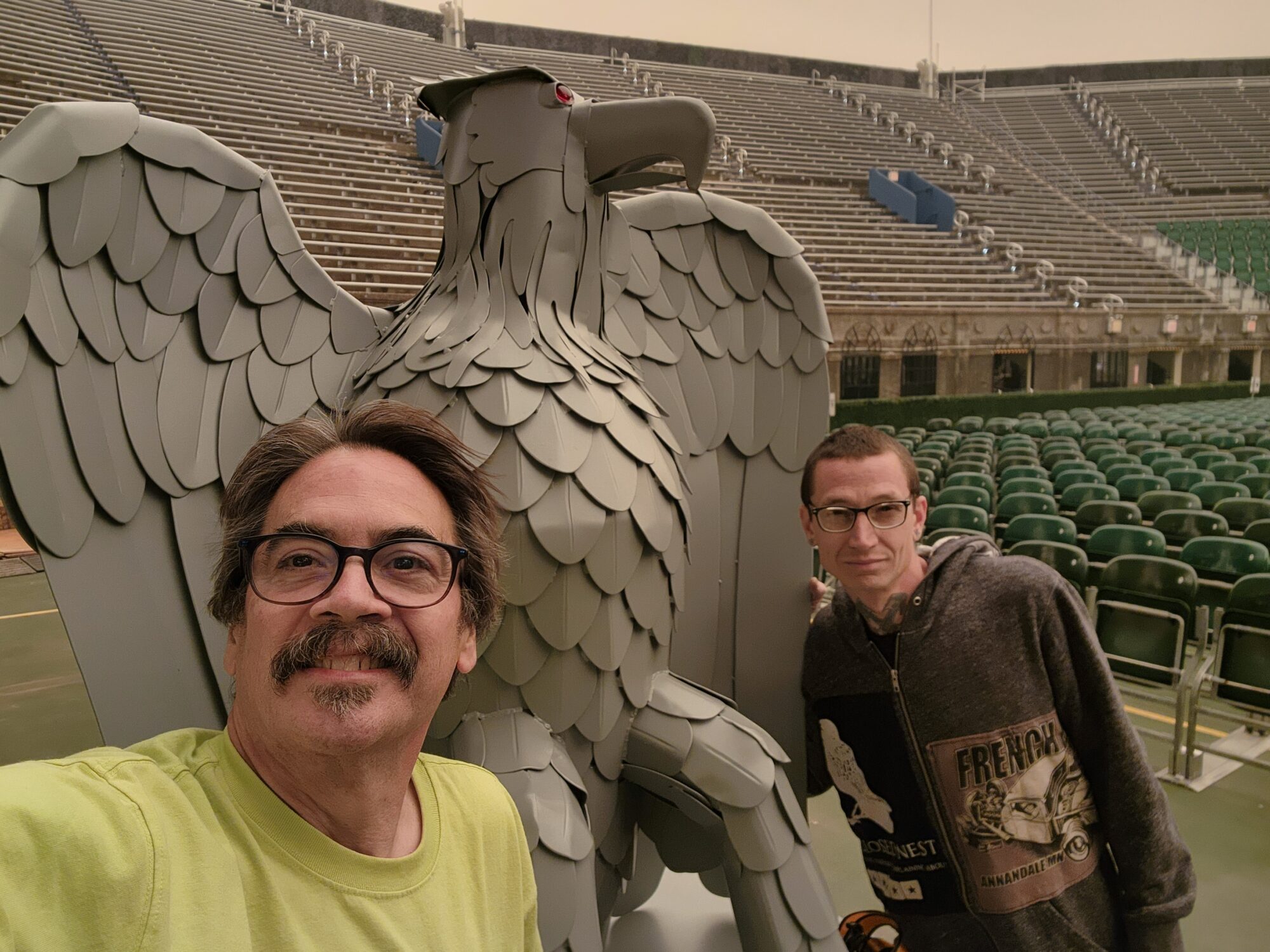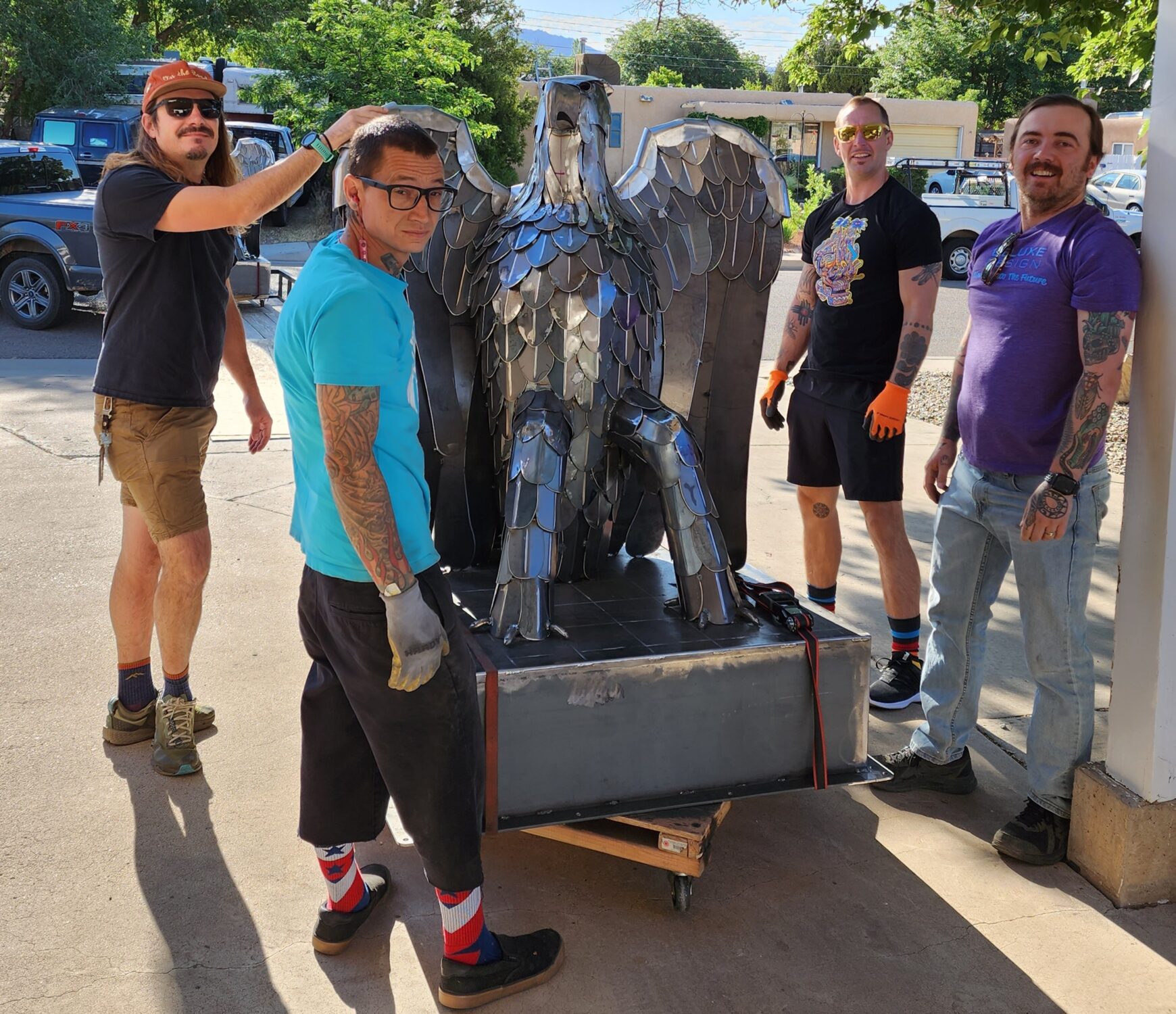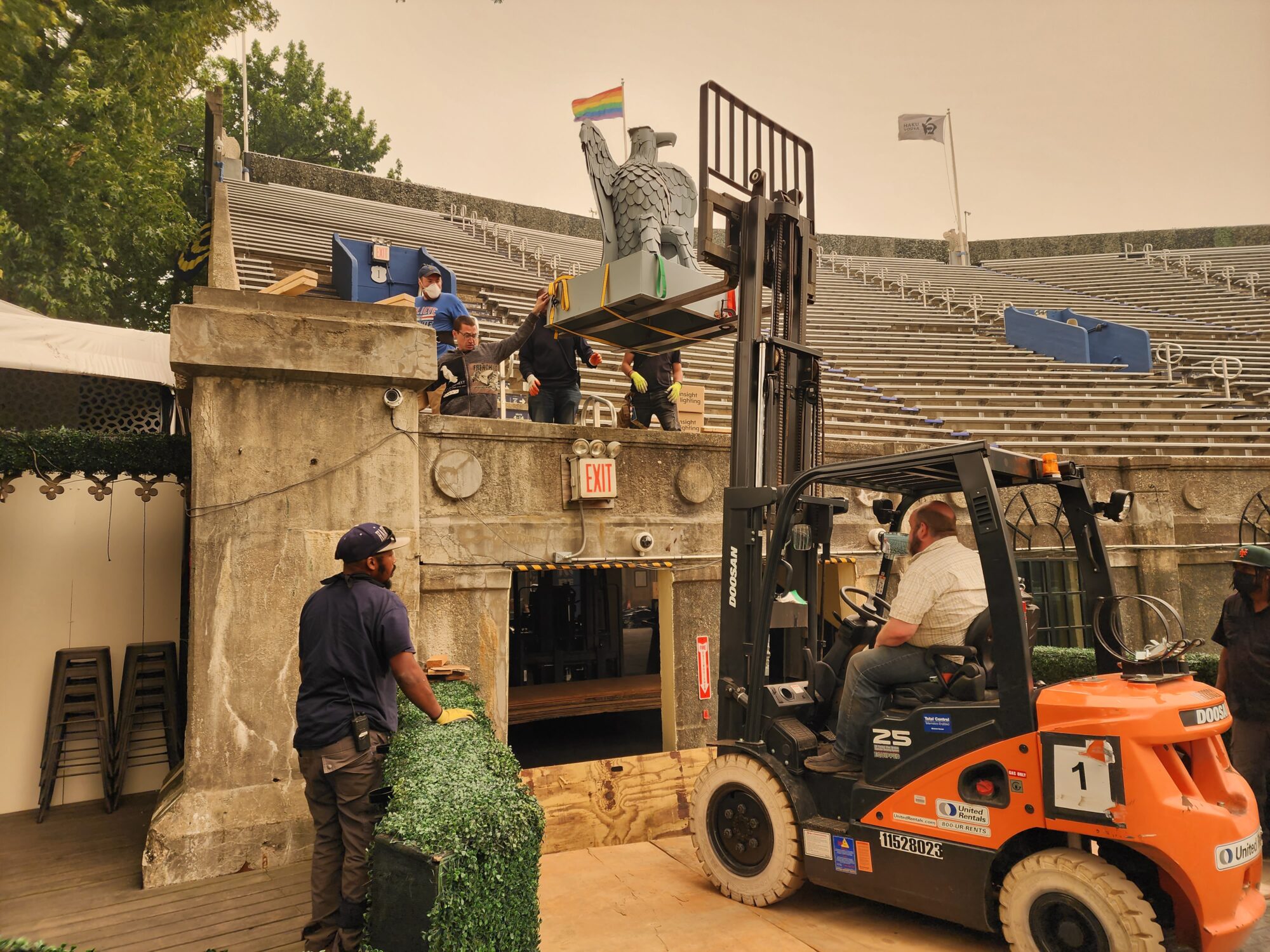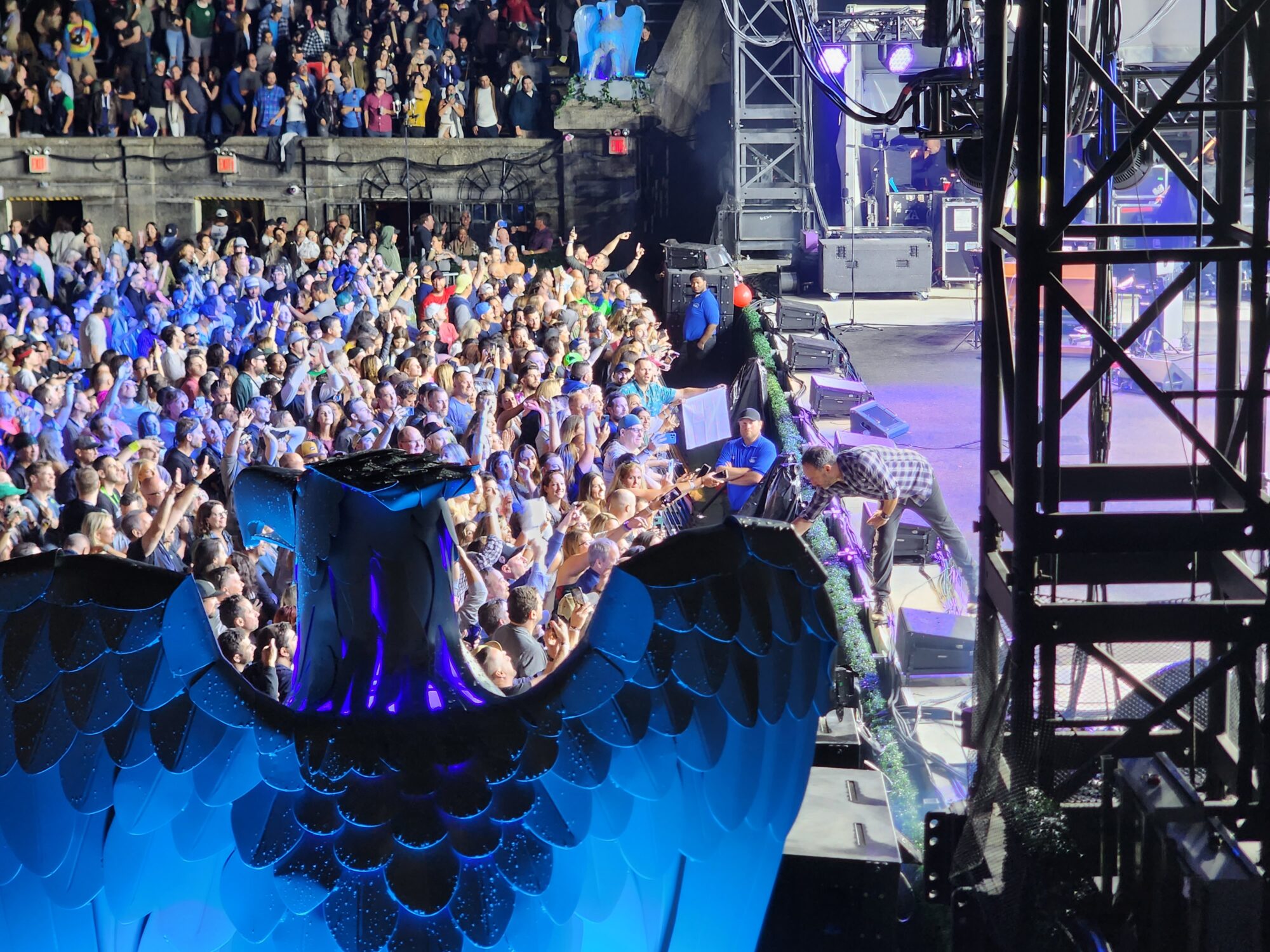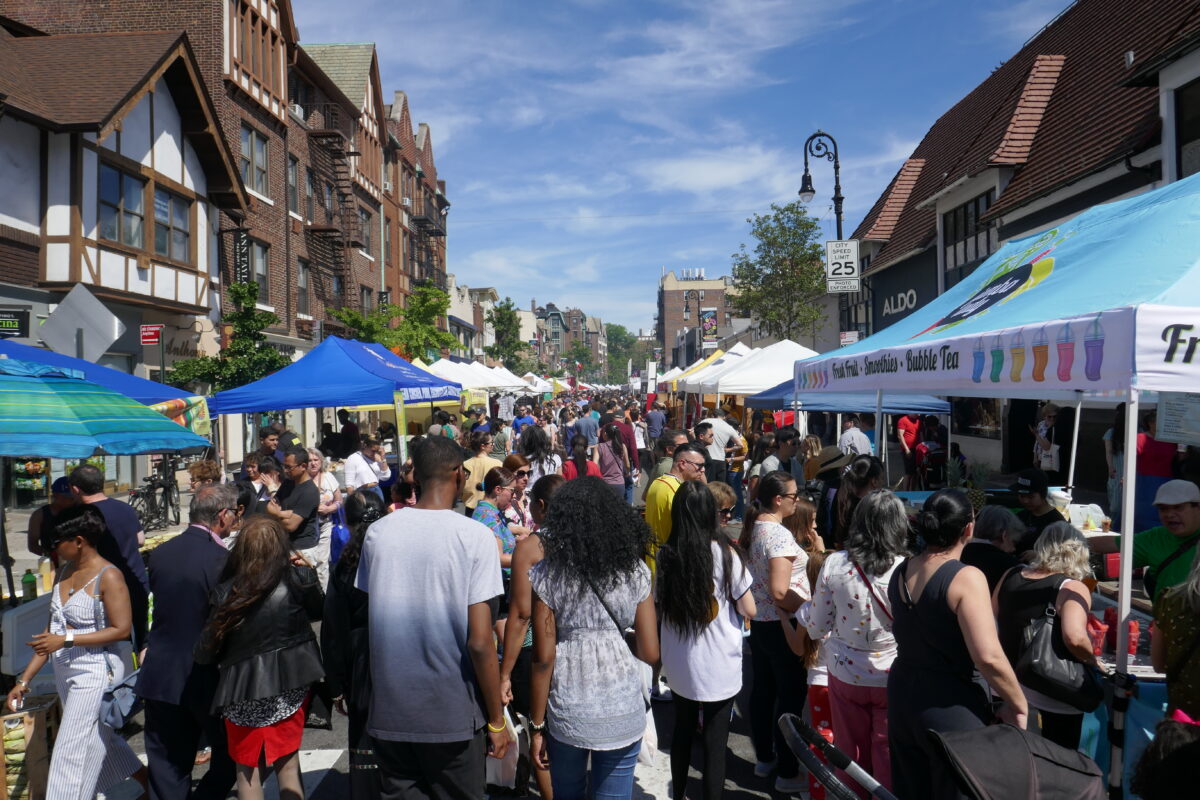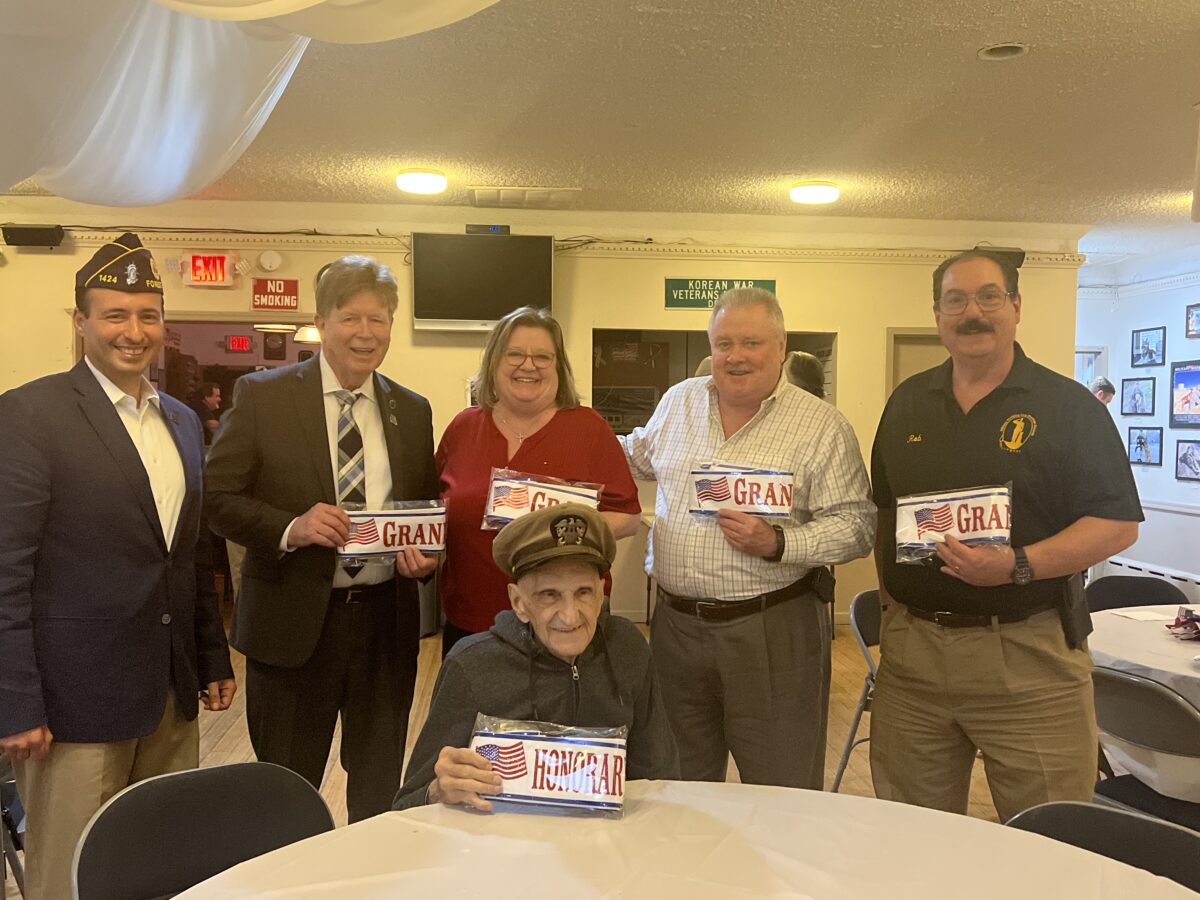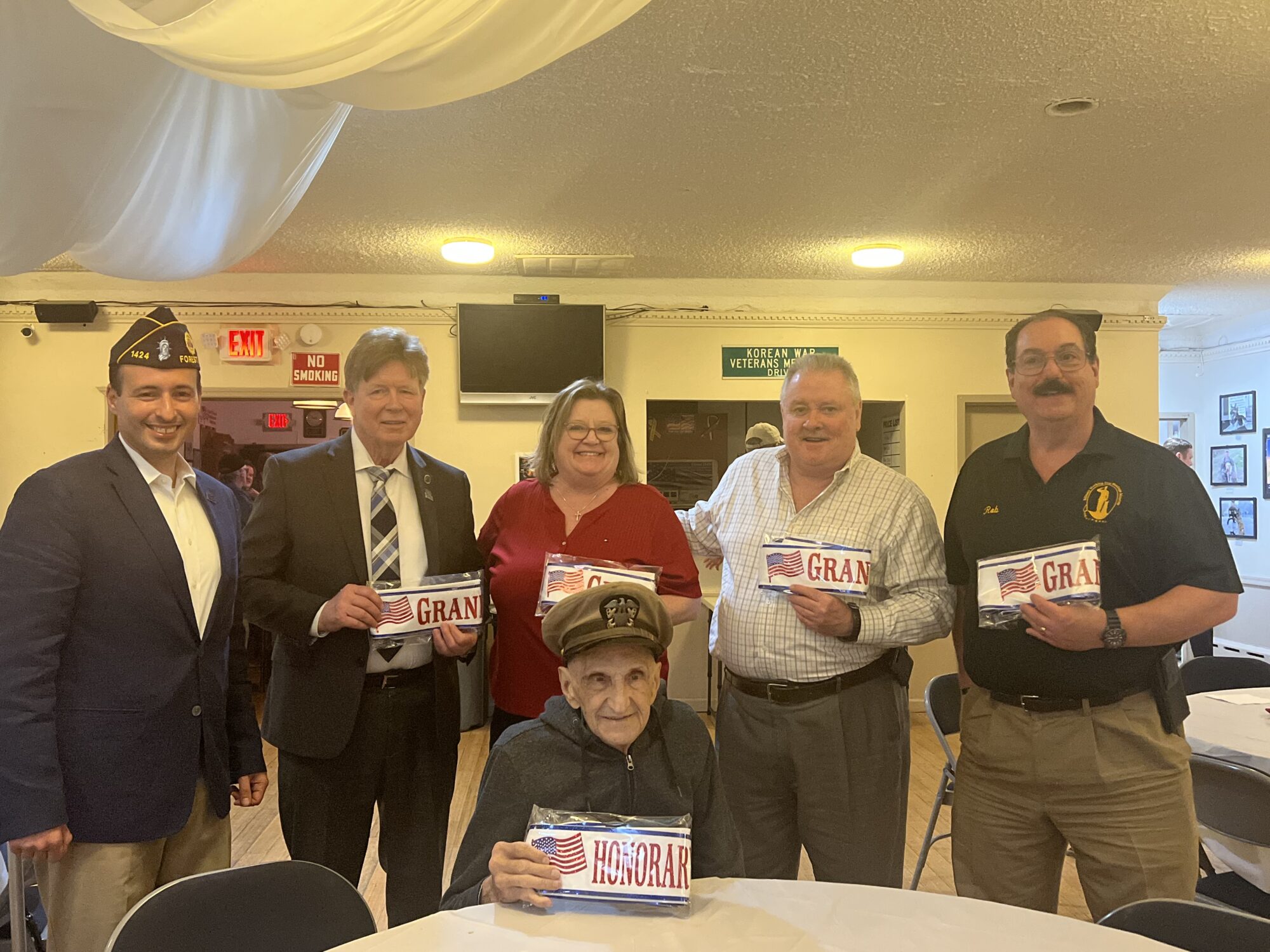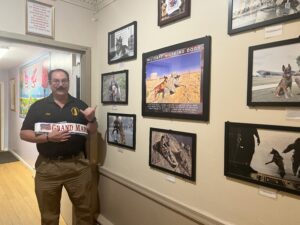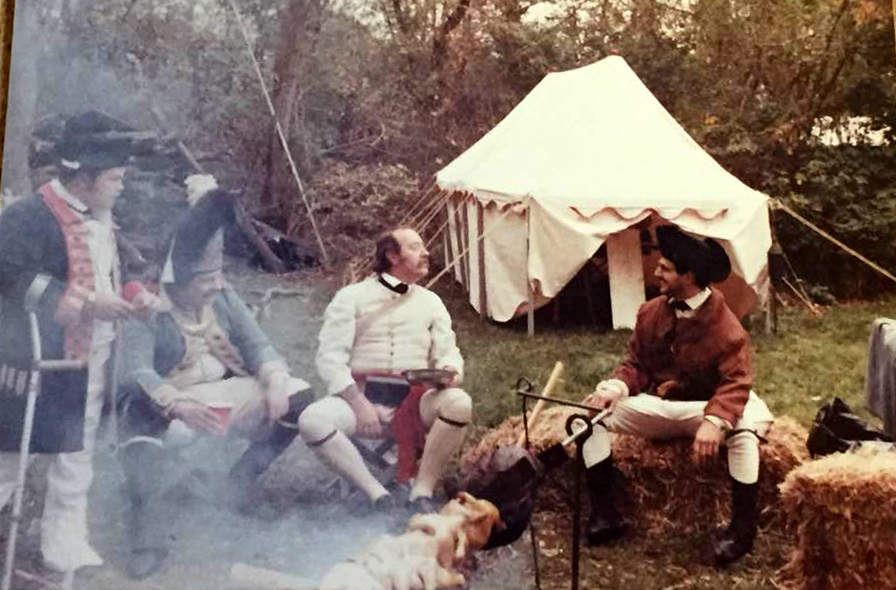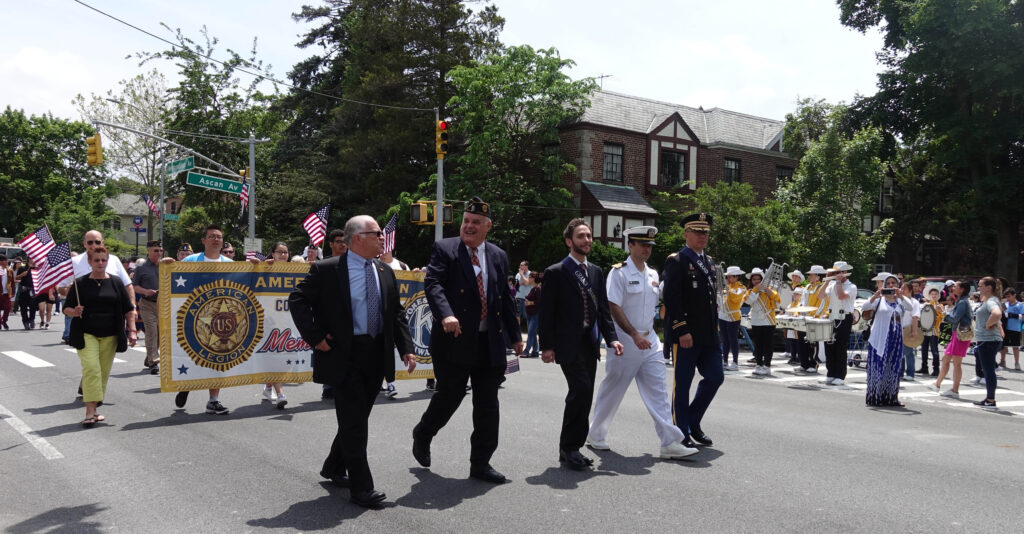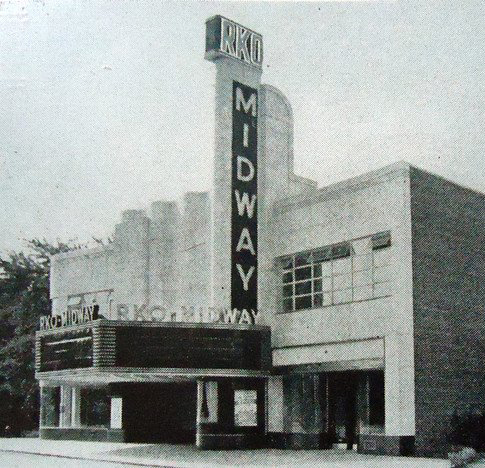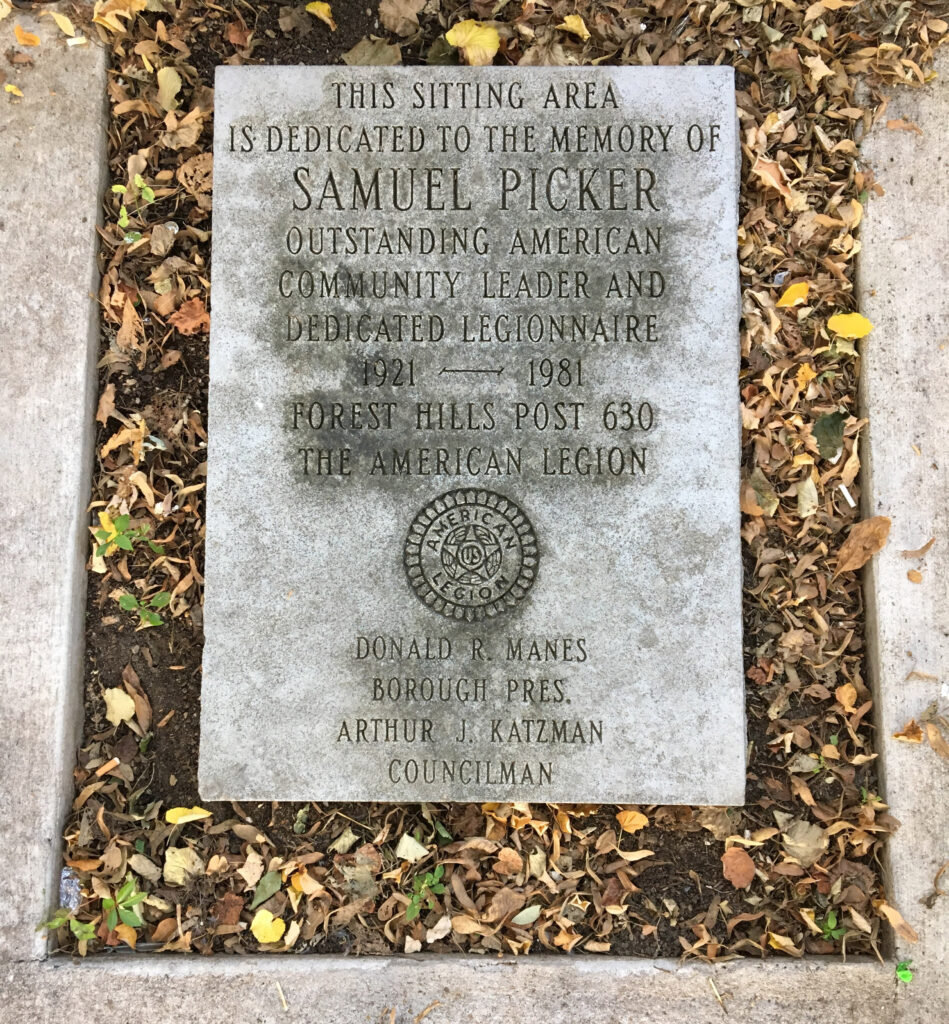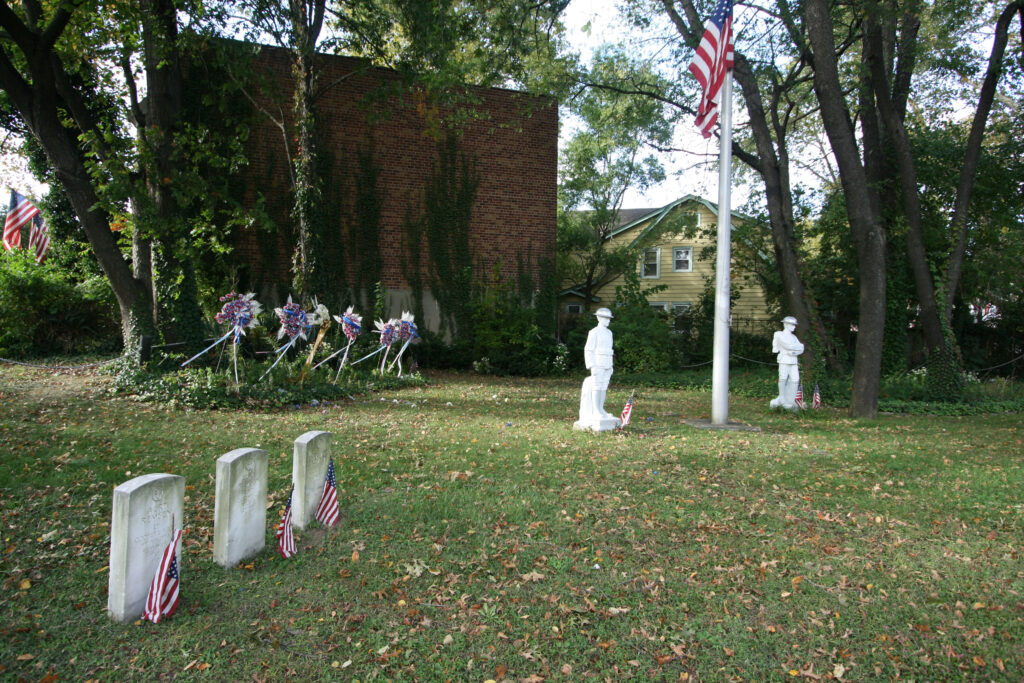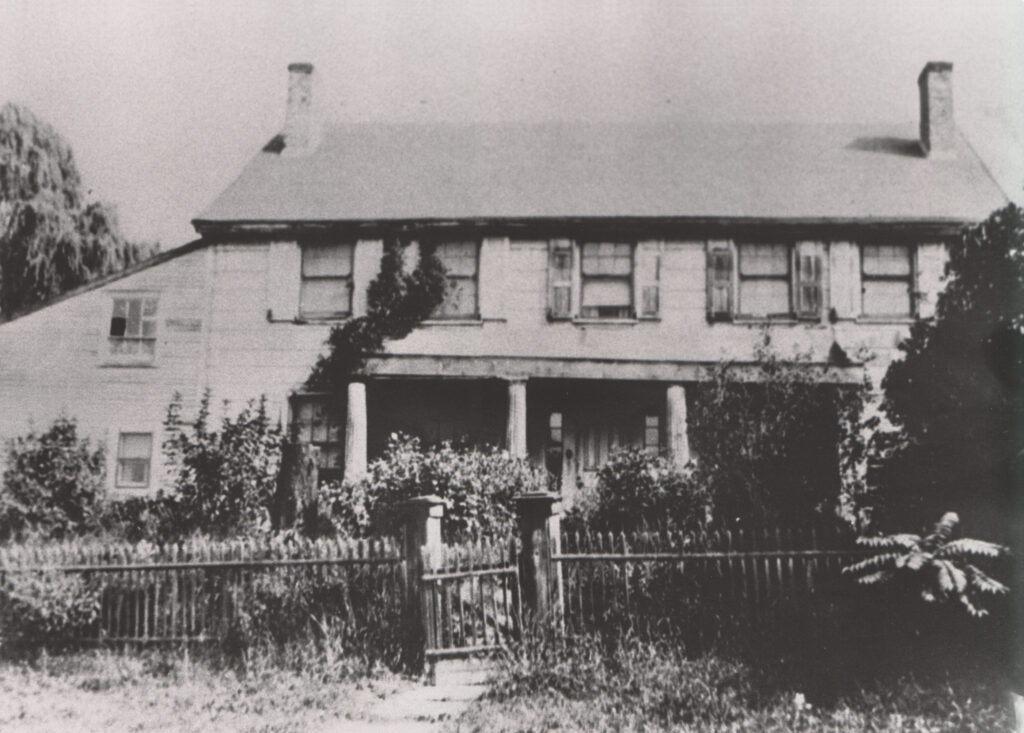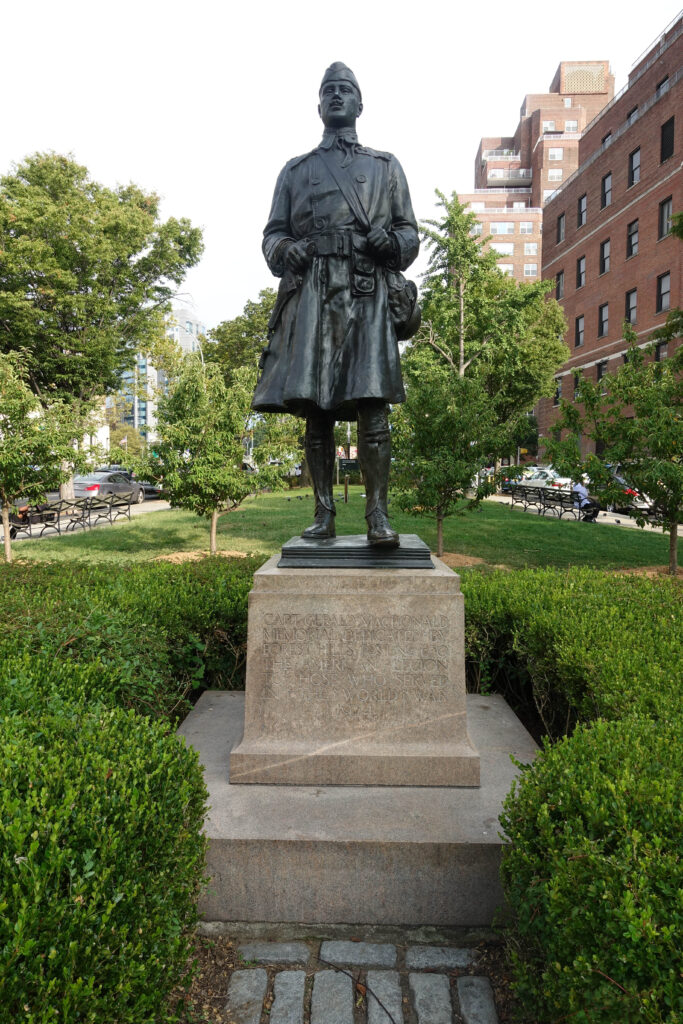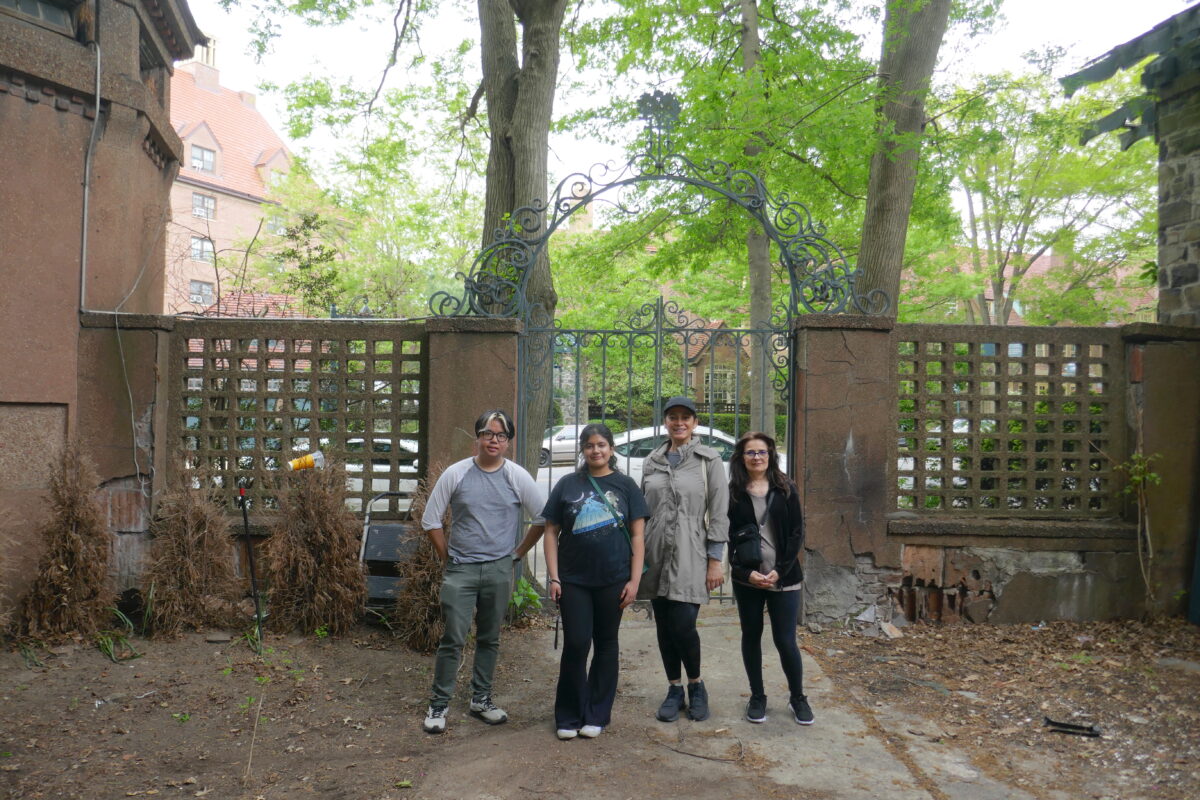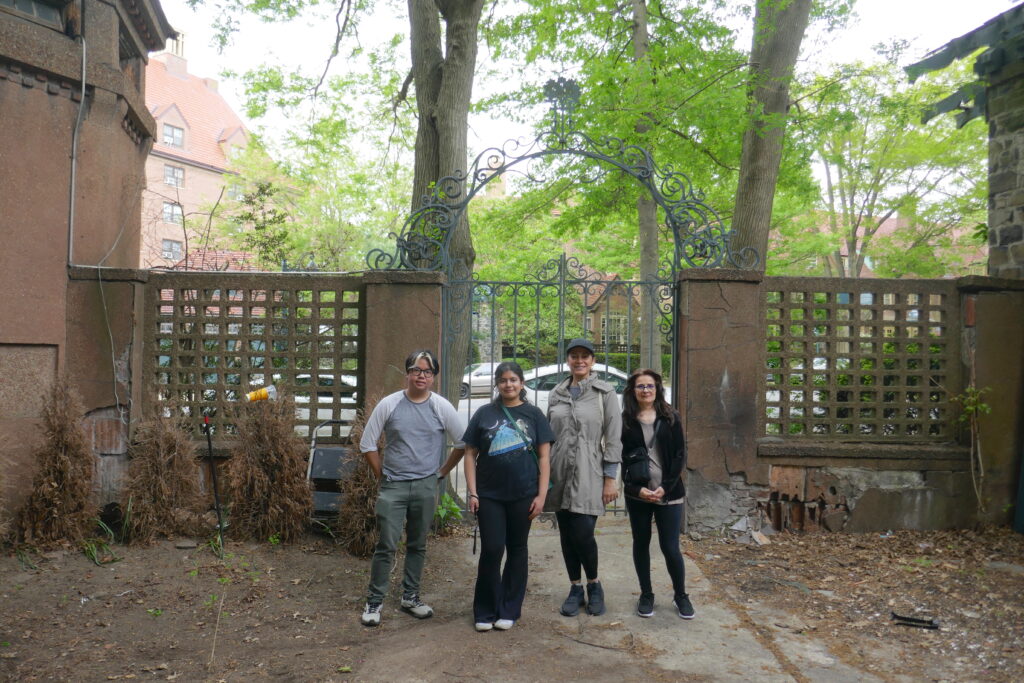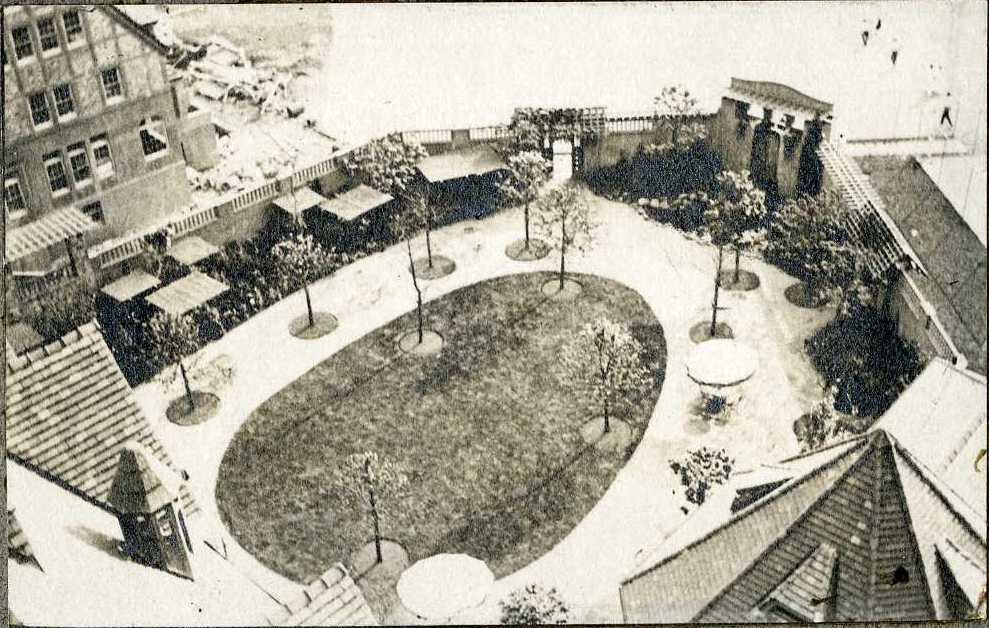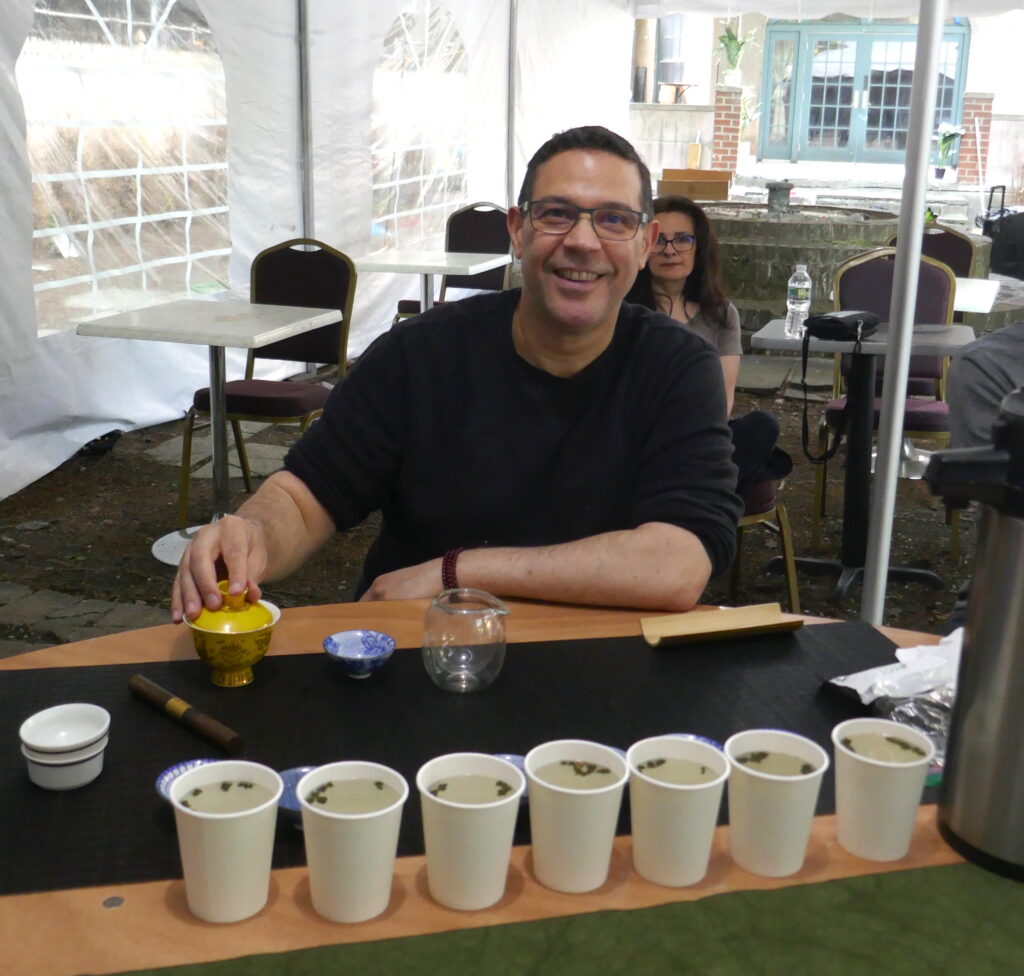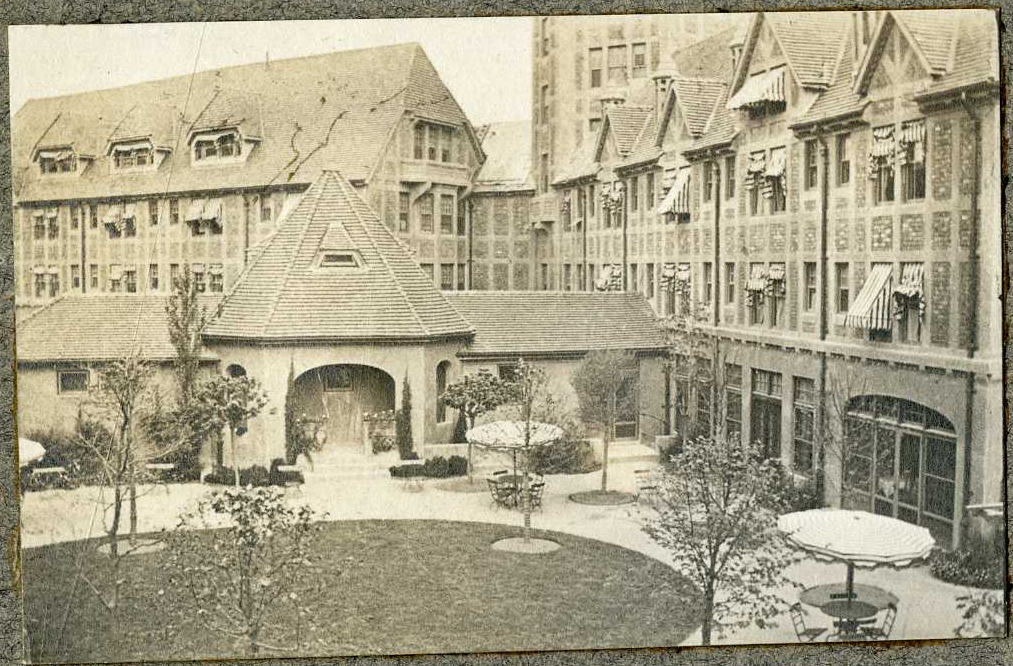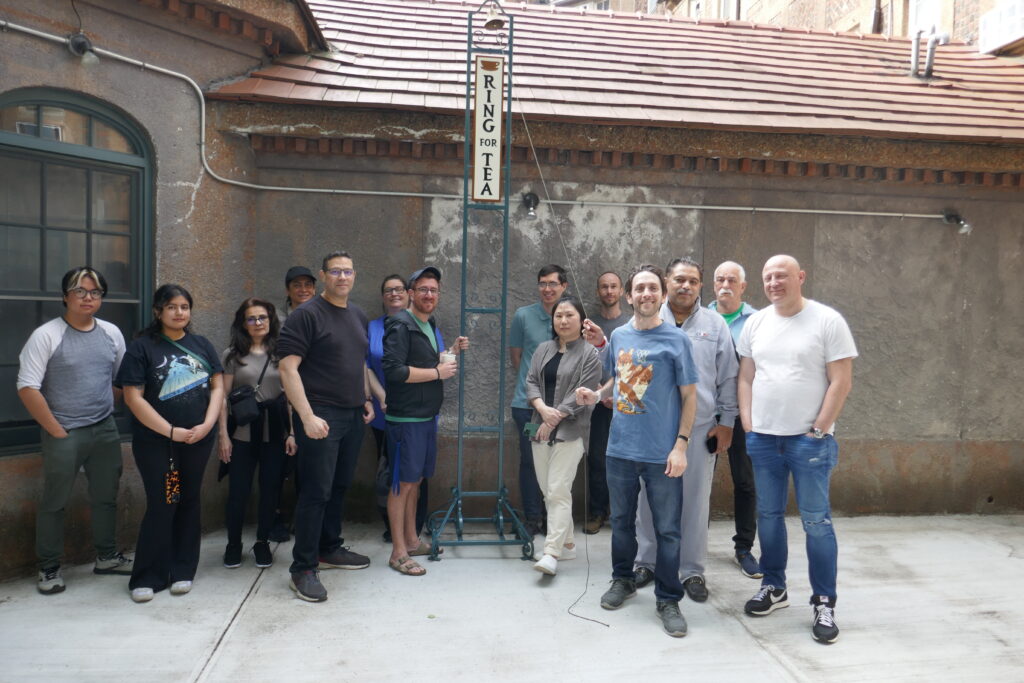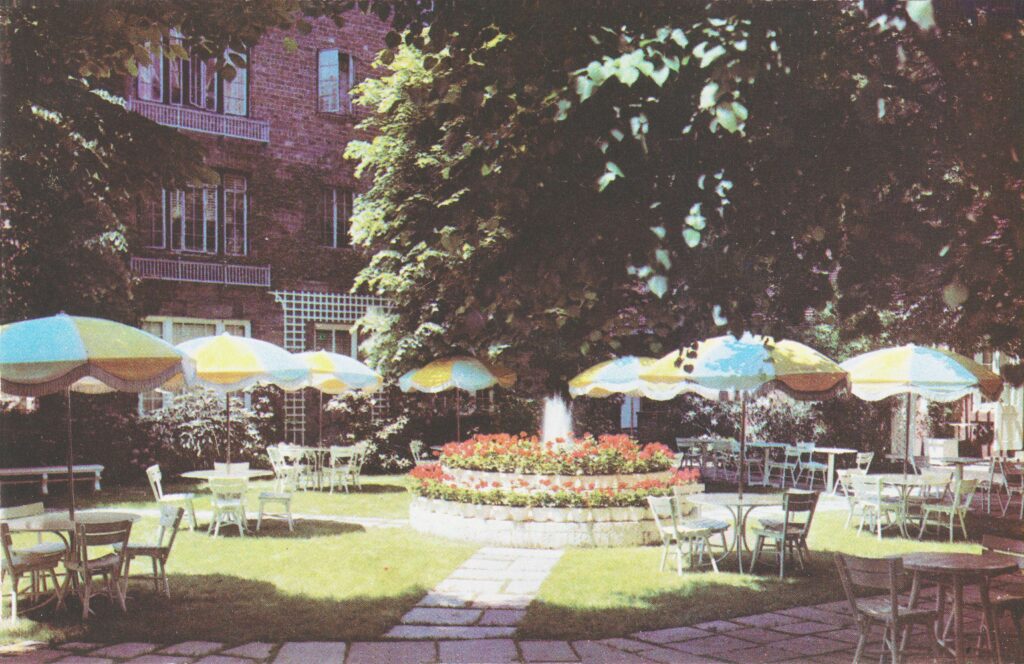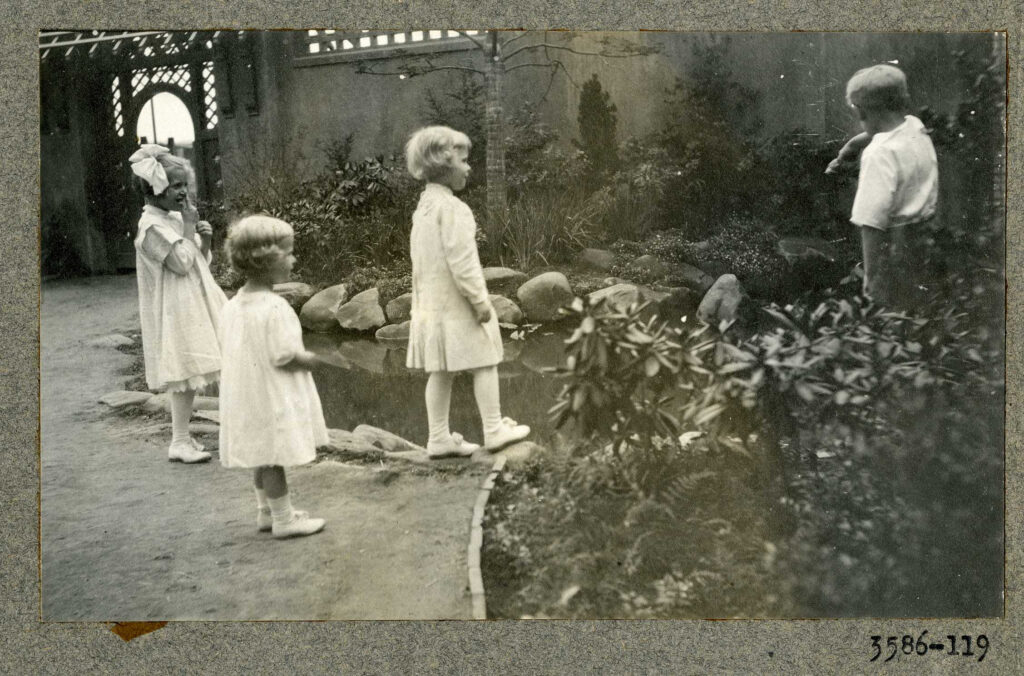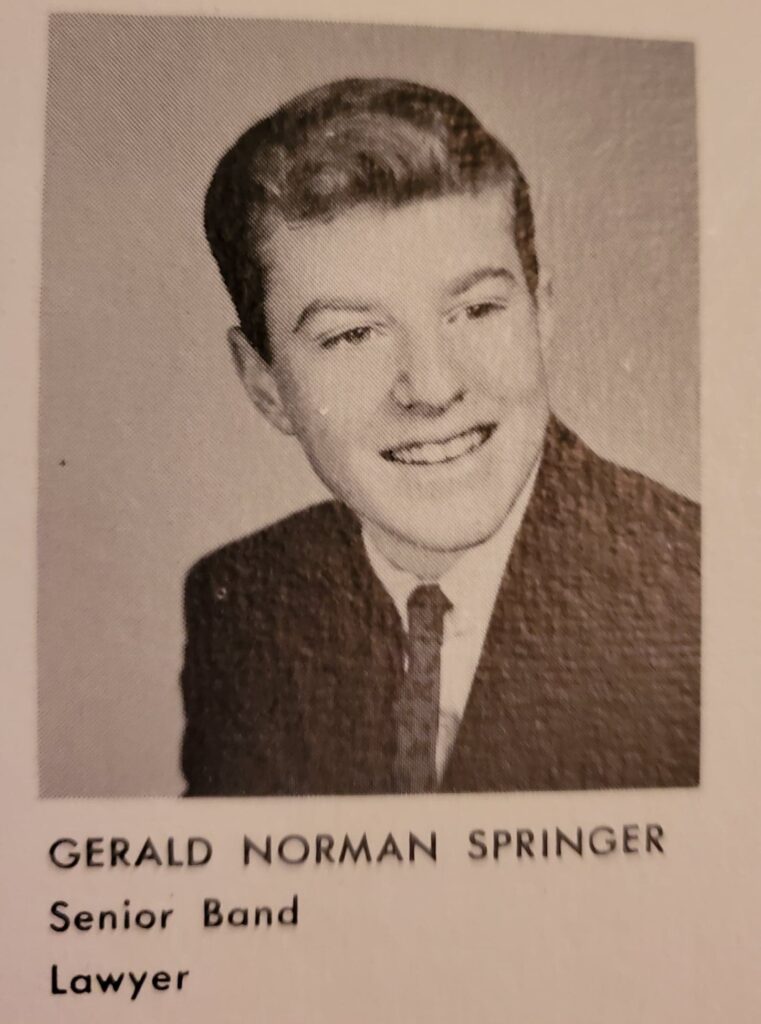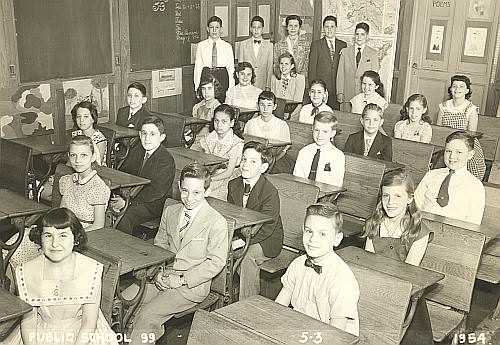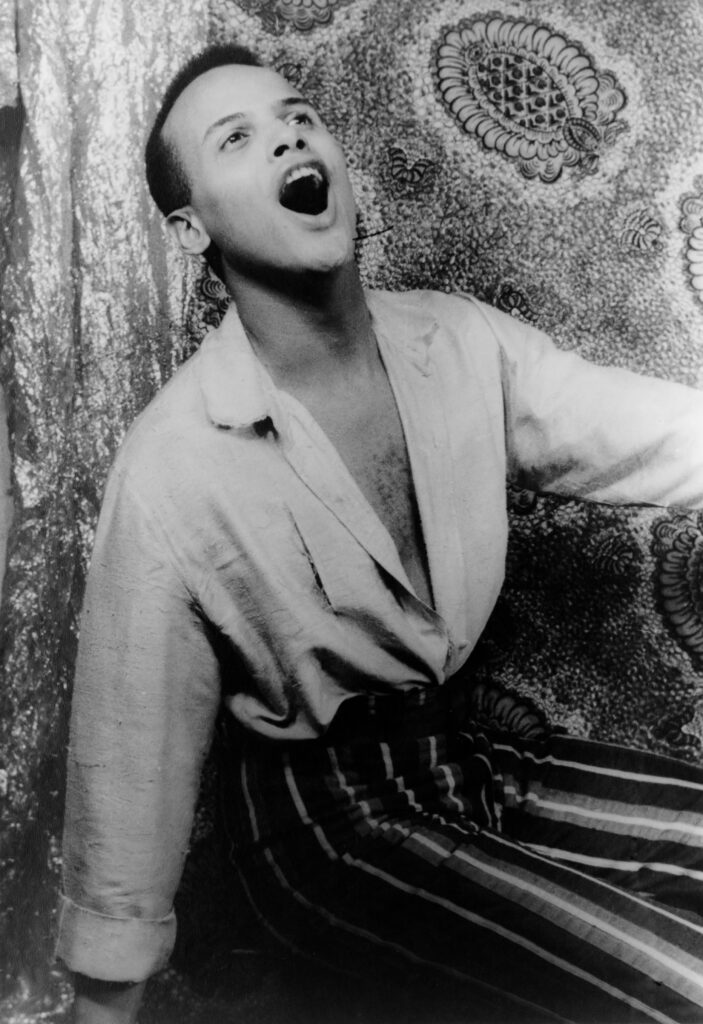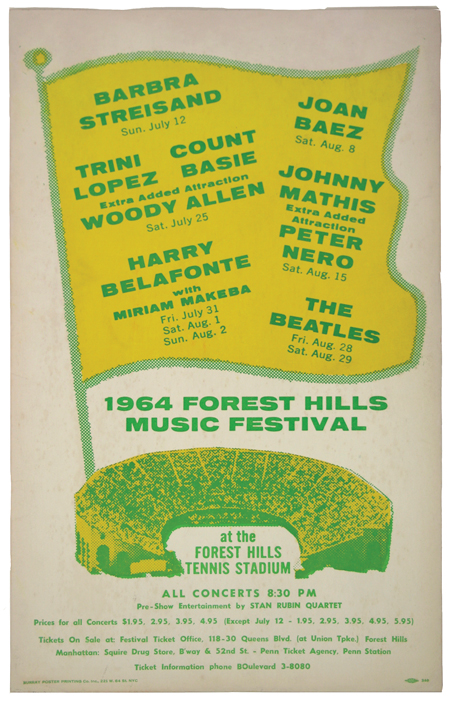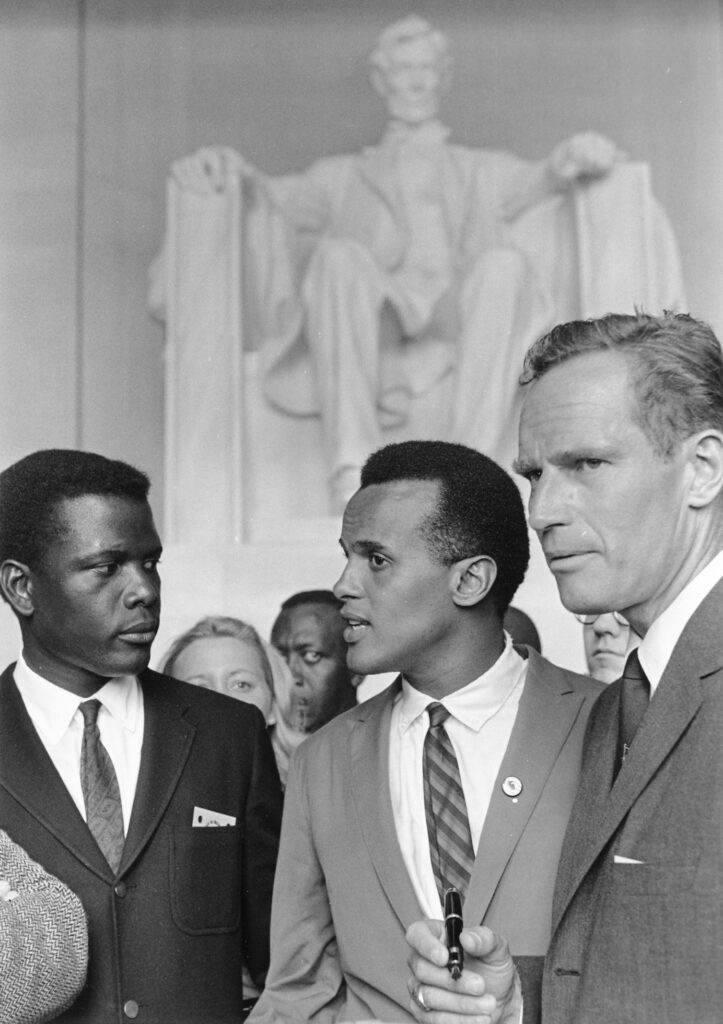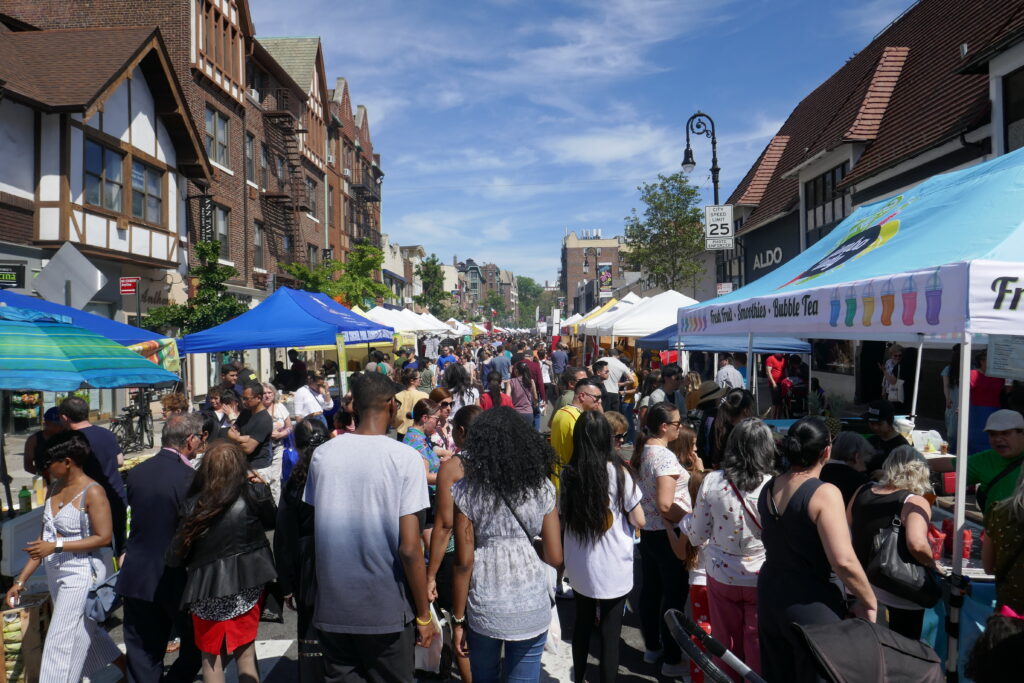
2019 Forest Hills Festival of the Arts on Austin St. Photo: Michael Perlman
By Michael Perlman | mperlman@queensledger.com
For over 20 years, the Forest Hills Festival has been a tradition that unites Forest Hills residents and visitors with local merchants and nearby businesses, offering nearly every type of service.
On June 11 from 10 AM to 6 PM, diverse international foods and high-quality merchandise including novelties will line Austin Street from 69th Road to 72nd Road, and “Restaurant Row” will once again become an outdoor performance venue.
This festival, which is among the most distinctive neighborly and family-friendly events citywide, is the creative vision of Leslie Brown, longtime president of the Forest Hills Chamber of Commerce, whose mission is the 3 C’s: “Commerce, Community, Culture.” “Culture brings the community together and commerce makes the community thrive.” Chamber members consist of 125 local members.
“My goals are to support our community’s small businesses and promote Forest Hills by bringing as many visitors and residents together to enjoy shops, restaurants, and all businesses,” she said.
Not only is Brown the founder of the Forest Hills Festival, but Jazz Thursdays each summer. She reminisced, “The festival came about as a way to showcase Forest Hills businesses and allow its business owners and residents to come together at a fun family event.” Part of her vision was to showcase local talent. Throughout the festival’s history, performers included dance students, martial arts students, fencing students, young musicians from local music schools, local jazz singers, and even world-class performers on a large stage. “This year will be the 3rd annual Sandwich Eating Contest, sponsored by Stacked Sandwich Shop,” she said.
This is community at its finest. She said, “Many families and people plan the start of their summer activities by attending the festival. The rides, the local talent showcased at the beginning, and the entertainment that continues in the mid-afternoon is what everyone looks forward to. There is always something to discover and someone to meet.”
The business district began to take shape after Forest Hills’ founding in 1906, and Austin Street would soon be nicknamed, “The Village.” Even today residents and merchants share long relationships of community support, according to Brown. “Business owners will support a patron’s kids’ Little League team, or a customer will spread the word about a business they love. Mutual respect and connections still exist here, so we need to celebrate such communities, since AI and internet shopping lead us away from human contact,” she said.
Not only have a few new stores opened this year, adding to the community’s diverse offerings, but the owners are ethnically diverse. Year-round, Austin Street becomes a magnet for shoppers from the five boroughs and Long Island.
Nancy Valentin, owner of NV Jewelry, founded her business in June 2010 and participated in at least 10 festivals. She feels additionally proud being raised in Forest Hills. Her kiosk will offer earrings, bracelets, necklaces and rings, and of course new jewelry creations. “No matter what circumstances or challenges women have endured in their lives, a piece of jewelry will empower them, and make them feel the very best,” she said.
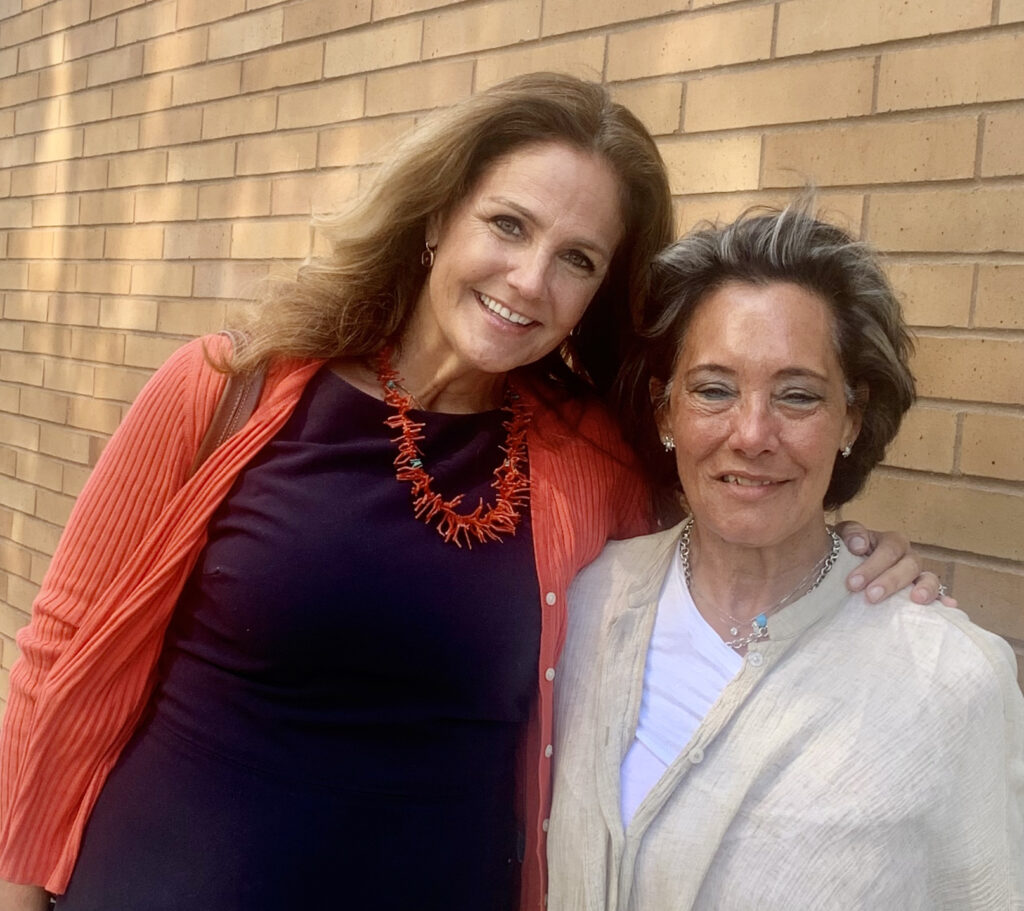
Michelle Charlesworth of Eyewitness & Nancy Valentin of NV Jewelry.
Valentin embraces the sense of celebration that runs throughout the streets of the festival, as well as the rapport she builds with longtime and new clients. “Leslie Brown does such an amazing job selecting diverse vendors. She always cares about the needs of others, which truly shows,” she continued.
“The Forest Hills Festival is one event I look forward to all year long,” said Christopher Iavarone, owner of Tiger Schulmann’s Martial Arts at 73-25 Woodhaven Boulevard, which serves the community since 2009 and puts on a show every year. The students will take the stage and provide demonstrations.
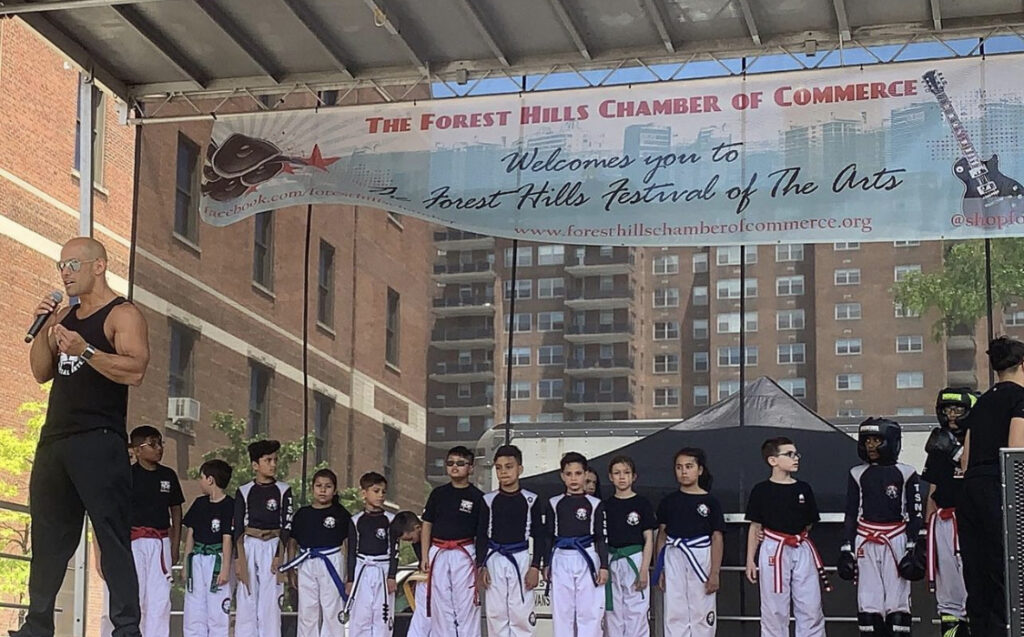
Sensei Christopher Iavarone of Tiger Schulmann’s Martial Arts, Demonstration on Restaurant Row.
“It enables me to plug into the community and showcase kids who worked hard in their classes and give a platform to express themselves through martial arts. I choreograph the moves and the music. The community will have an ‘inside view of our school’ on a daily basis.” Kickboxing and jiu-jitsu are the true forms of the art, but by having different people perform, introduces a new dynamic each year. “When we put up a tent and have a huge tiger, it brings smiles to our community, and then we get to work with people one-on-one,” he continued.
Iavarone explained his mission. “Self-defense and physical conditioning are two most important aspects. We help kids who aren’t confident, but then are able to defend themselves from bullies. Adults also benefit greatly, as soon as they step through our door.” He considers his classes as a 3D activity. “It’s fun, teaches a life skill, and you get fit.”
The musical sensation, Yacht Lobsters, is sailing the waves and will newly take the grand stage on Restaurant Row. The seven-piece ensemble will engage a large audience at 3 PM, followed by a second set at 4:10 PM.
Yacht Rock is a genre that is a conglomeration of many artists, mostly from the 1970s and early 1980s. As a tribute band, the goal is typically to emulate their sounds. “For a tribute to be unique, it’s almost an oxymoron, but we take it pretty seriously. We go beyond copying music by taking songs that we heard a million times and love, and doing something unique,” explained musician David Mendelson of Yacht Lobsters, who anticipates performing and giving back to his birthplace, Forest Hills.

Singing sensation Yacht Lobsters. Photo: Arazelly Guevara
The character of the musicians also distinguishes them from other tribute bands, and Mendelsohn considers their harmonious teamwork a blessing. Afterall, vocal harmonies are a significant element of the genre. “We are trained musicians from NYC, who I feel are some of the best in the world,” he said.
Some staples of Yacht Rock are “Africa” by Toto and “You Make My Dreams Come True” by Hall & Oates. Their repertoire even reflects the sounds of Steely Dan, which bears Forest Hills roots. Yacht Lobsters is big on medleys, and therefore takes segments of classics and consolidates them along a theme, which may include some titles that may not qualify as Yacht Rock, but complements it. “The Magic Medley,” consisting of “Magic” by Olivia Newton-John and “Magic” by Pilot, and it may also allow the audience to hop on a “Magical Mystery Tour” by The Beatles.
Also original is how songs typically performed by high tenor males take on a new context through their female solo vocalist, Charly Kay, a master of blue-eyed soul. The band also takes pride in jamming and improvisation, varying from typical Yacht Rock.
Since the mid-2000s, Rysa Childress, owner of All Star Studios, made a mark on the Forest Hills Festival. She explained, “The kids love dancing for their very own community, and we hope it spreads joy to all. After the performance, our booth turns into one big dance party. You can stop by to get information about our programs and free trials, to just say hi, or to dance with us.”
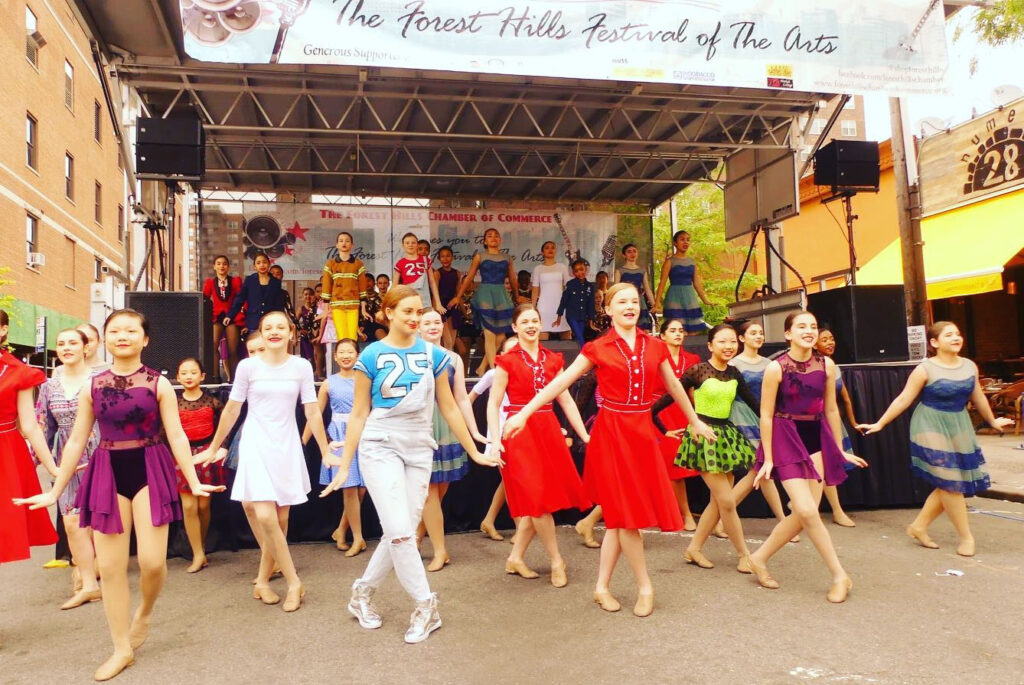
All Star Studios team performing at their best, 2021. Photo: Rysa Childress
As a small business owner, she strives for a family atmosphere and giving back to the community through their art form is emphasized to all dance students. She explained, “Our Shining Star dance team does do competitions, but that is not our main focus. The teams do a multitude of performances to share their love of dance with the community and fundraise for those in need. Outside of their year-end recital, many team dancers perform for seniors in nursing homes, kids in programs at Queens Center mall, and have done an amazing job with fundraising events and shows for Autism Awareness organizations.” In their studio, she coordinated the PJammin’ Party to fundraise for American Childhood Cancer Association, donate time, gifts, or money to City Harvest, Forestdale Foster Care & Social Services, and From Our Hearts To Your Toes.
For a few years, Dream City, owned by Corrie Hu, has been a festival participant. Dream City is a children’s play and learn center that is on a mission to create a fun and safe learning environment, sparking curiosity while encouraging social, emotional, physical, and cognitive development.

Corrie Hu, founder of Dream City, 2nd from left.
Hu opened prior to the pandemic in January 2020. She reminisced, “While we were only open for 7 weeks before NYC shut down, I was so touched and amazed at the support from our community, and that we were welcomed back as soon as it was safe to re-open. Dream City is a type of business that requires a high level of trust from parents to bring the most cherished people in their lives to our business, and I am forever grateful for their trust in us.”
Participant Stephanie Khan is a perfect example of a business that recently underwent expansion. Now the Stephanie Khan Medical Office is located at 110-78 Queens Boulevard. Many years ago, statistics revealed that there is a shortage in primary care physicians. Therefore, nurse practitioners were to fill in the gap of primary care. She wants fairgoers to be educated on what is a nurse practitioner and how they can help the health of their loved ones.
Khan explained, “Many illnesses and complications are manageable through medication and lifestyle choices. It is important to have strong communication and relationship with your healthcare provider, which is something I strive for. I also focus on shared decision-making, when it comes to treatment options. My goal is for people to feel empowered over their health and to empower future nurses and nurse practitioners to follow my lead in improving primary care.”
Chef François Danielo and fifth-generation breadmaker of La Boulangerie de François at 109-01 72nd Road, is a mainstay at the festival. He has participated in nearly all since opening in 2011, initiating an authentic bakery cafe experience in Forest Hills. He will always cherish the community’s response. “I will always remember the first time we made crepes outside for a 14th of July, French Bastille Day,” he said.
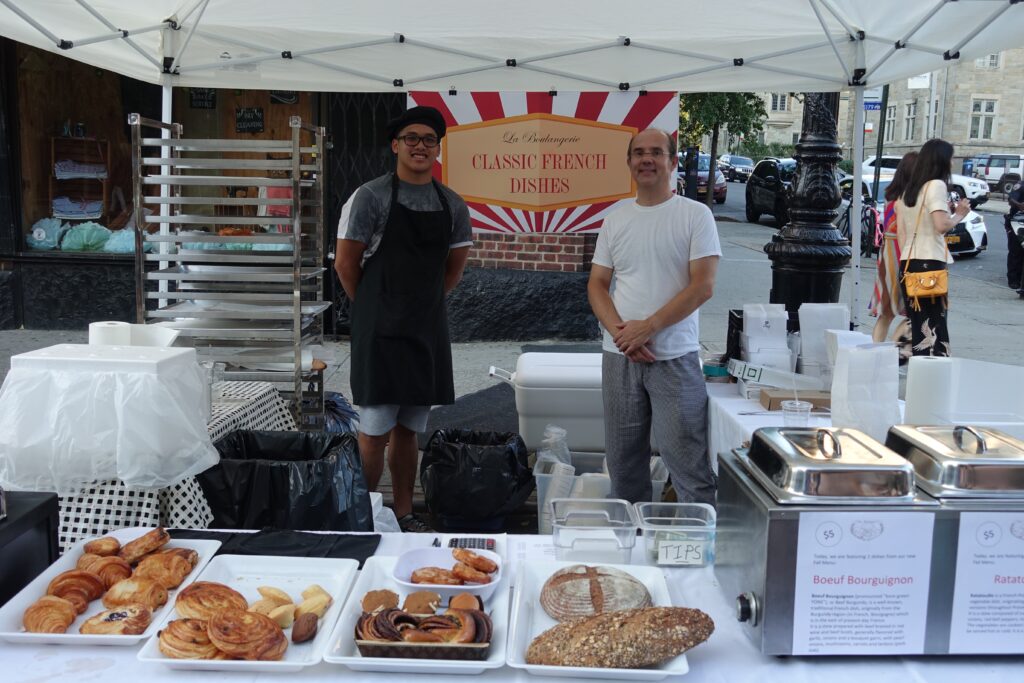
Francois Danielo of La Boulangerie, right, in September 2017. Photo: Michael Perlman
As patrons sit at a communal table at the café and observe the art of baking through a viewing window, fairgoers have observed the preparation of crepes, in addition to enjoying native pastries. When asked about his favorites, he selected the croissant, and as for more recent additions, Ispahan and Caramel Petit Gateau.
Danielo considers Forest Hills a small town that grants a great warm feeling. “Our bakery is like the town bakery, when patrons come and buy their bread and croissants.”
Twenty-four-year resident Christine Sheehan opened Dude’s Delicious Dog Treats last year. Her kiosk will offer homemade dog treats with quality ingredients. She aspires to grow the brand and business, while contributing to the health of dogs.

Dude’s Delicious Dog Treats table setup. Photo: Christine Sheeha
In response to last year’s festival, she said, “I was thrilled that we sold out, but more importantly with the great community response and most specifically our dog community. Many of our dog park buddies not only purchased items, but to sing the praises of our products to other dog owners. It really warmed my heart to see so much support and meet other dog parents and dogs.”
She founded her business stemming from a passion for dogs, baking, and the many lovely residents she met as a result of getting her dog, Dude. “I never thought that a dog would enrich our lives the way it has, but my husband and I can no longer think of life without him,” she said.
Sheehan will be in front of the new Pet Club that opened on May 14 at 71-24 Austin Street. “Our businesses can support each other by being a gathering area for dog owners,” she said.
